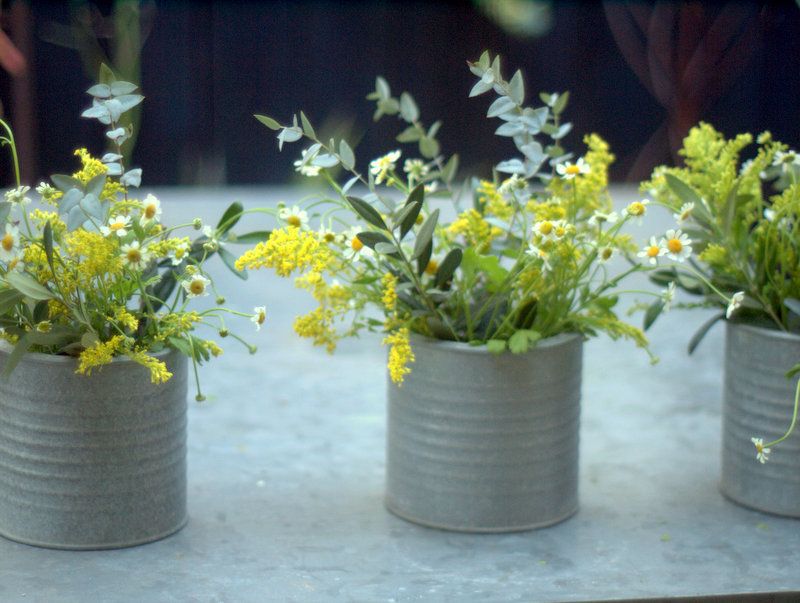
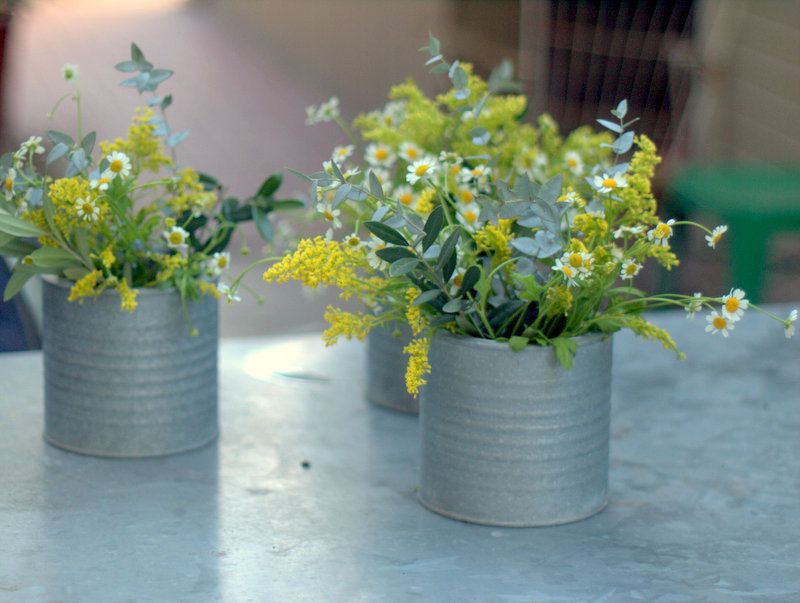
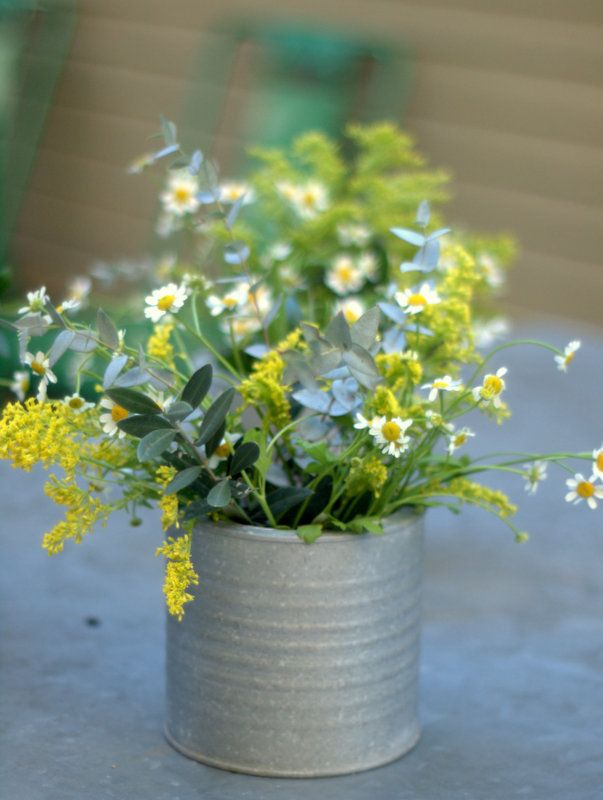
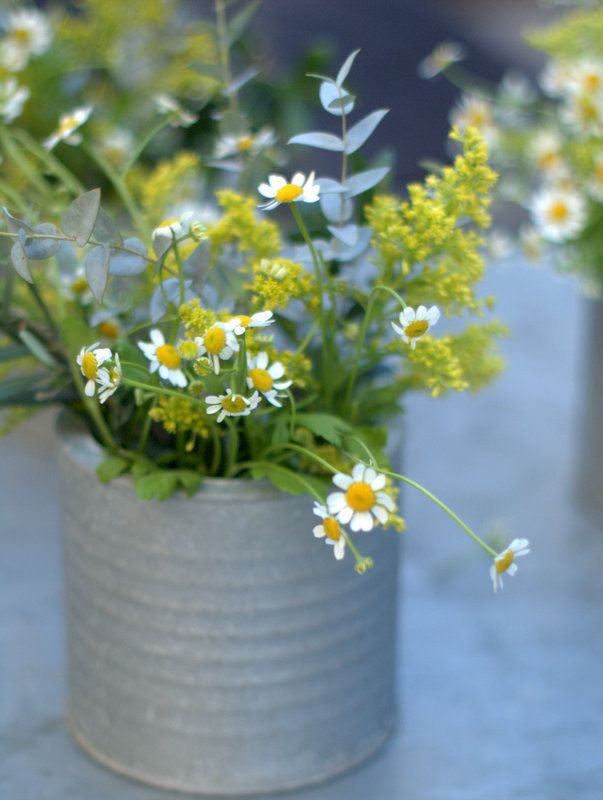
Goldenrod, feverfew, olive, and eucalyptus.




Goldenrod, feverfew, olive, and eucalyptus.
When I planted this slipper plant (Pedilanthus bracteatus, from Mexico) into the back garden last October, I knew that it would necessarily change the character of the plantings surrrounding it. Everything would have to become even more dry tolerant. For that reason I hesitated, because the back garden is where I like to experiment with new plants. Experiments sometimes need additional water. With the slipper plant’s sensitivity to over-irrigation, I knew there’d be no turning back. But the surprising thing about a dry garden is, once you commit to it, you’re likely to find that you’re spoiled for choice when it comes to filling your dry garden with beautiful plants. And if you’re inclined toward the kookily eccentric, then the dry garden has your number too. I don’t consider it an insult to call the slipper plant a bit of a kook. In my opinion, it’s a beautiful kook.
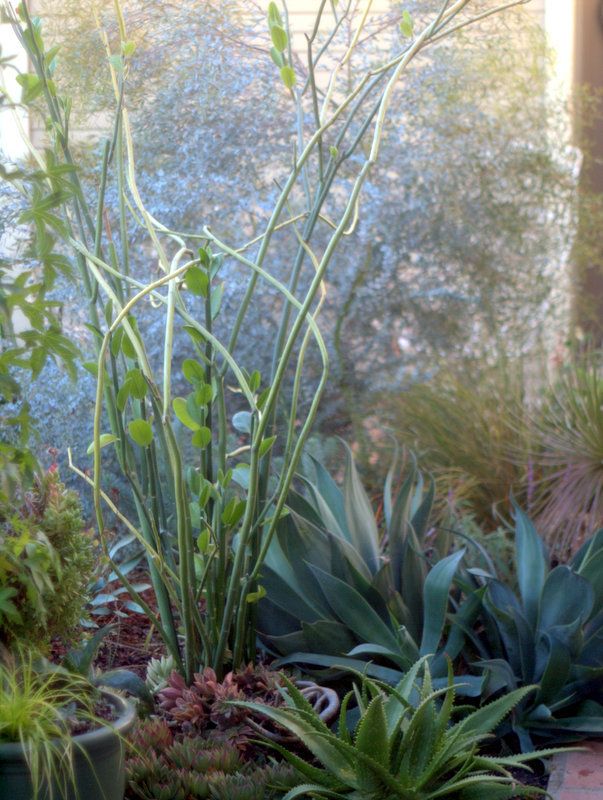
Its first year in the ground it had to acclimatize from its previous position of afternoon shade to full-day sun. I confess, during some of the most brutally hot days, I thought it was a goner — or would become forever blemished from sunburn.
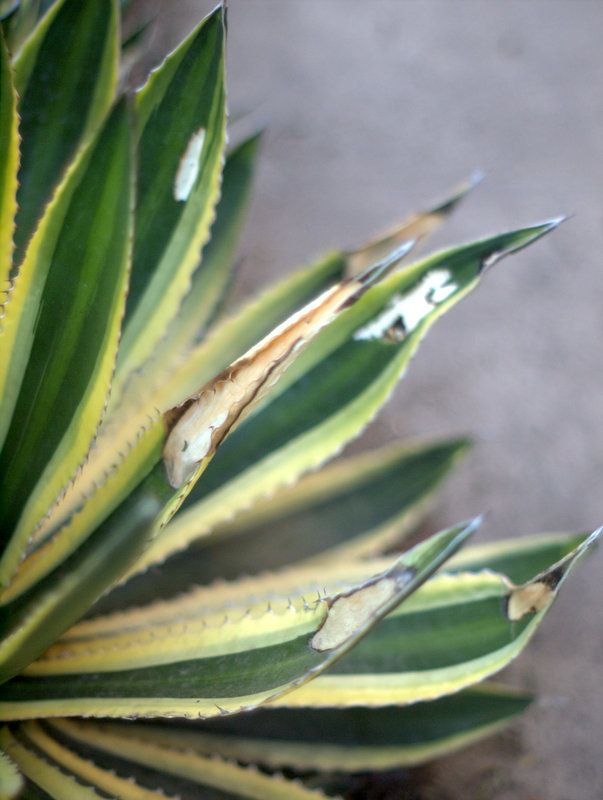
Like this Agave lophantha ‘Quadricolor’ after a 106-degree day. After years in this full-sun spot without sunburn, reflected heat off the pavement during that blistering day was its undoing. (And we’re not done with high temperatures yet. Today is predicted to go back up into the 90s.)

This little kook was giving me the hairy eyeball as I took photos of plants, as if to say What am I, chopped liver?
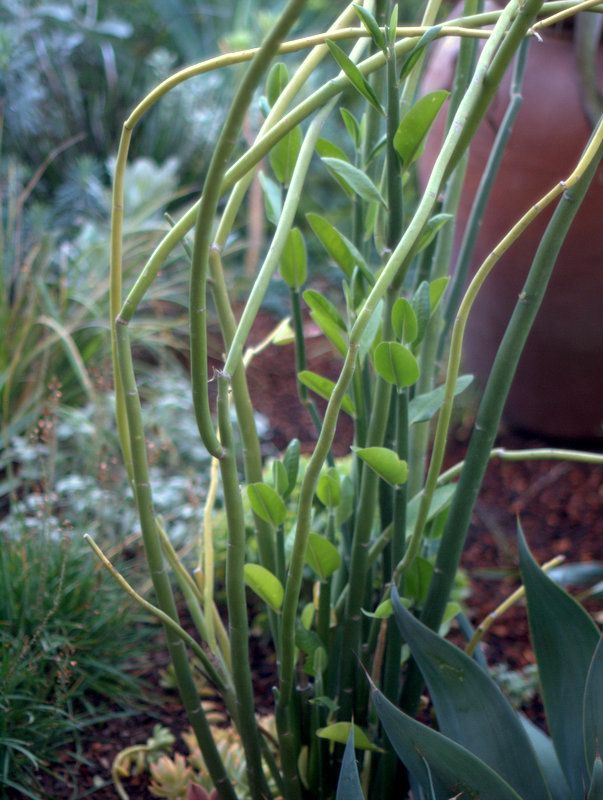
Plants give rebukes in more subtle ways than corgis. The move from container to the garden did seem to knock the pedilanthus out of its flowering cycle. It was in full bloom when I planted it last October.
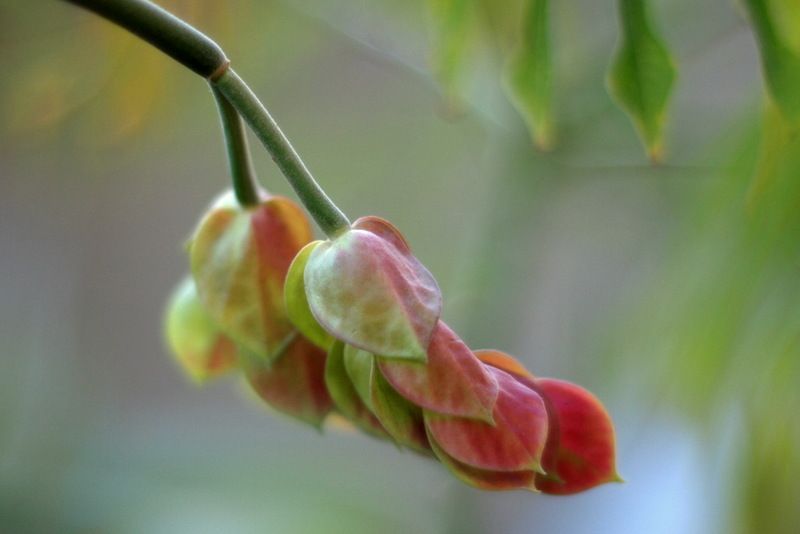
Closeup of one of its bracts last October.
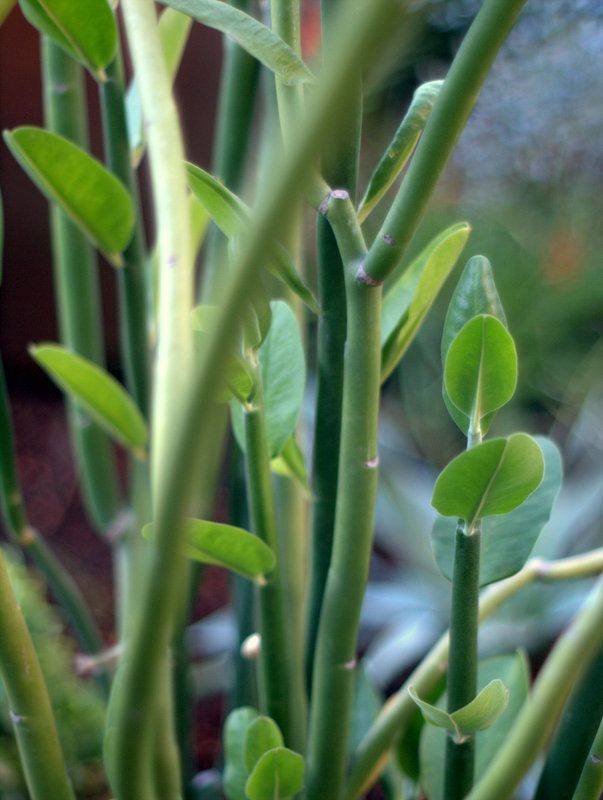
It was bare-stemmed all summer, and just recently burst forth with this flush of new leaves.
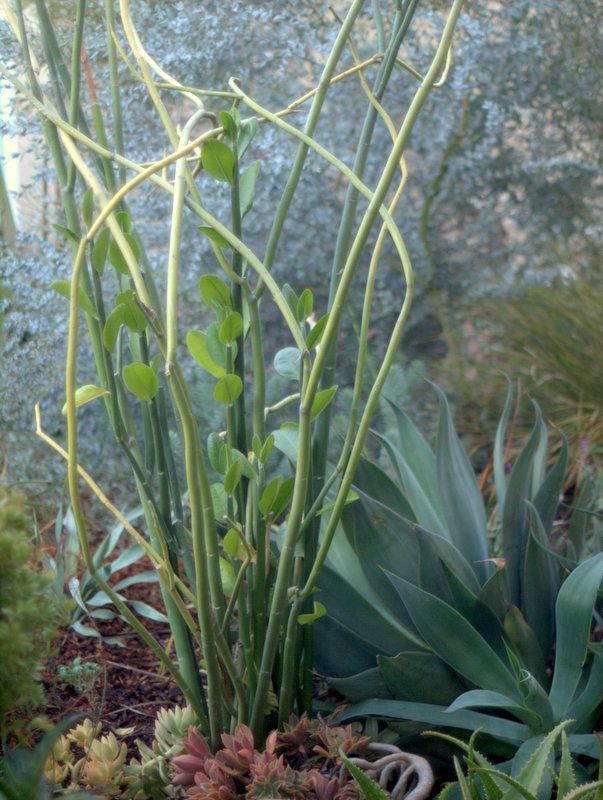
After planting, it comically splayed out in all directions, but seems to have found its equilibrium now. New growth rises out of the center rigid and straight, the old leafless stems making that helix shape.
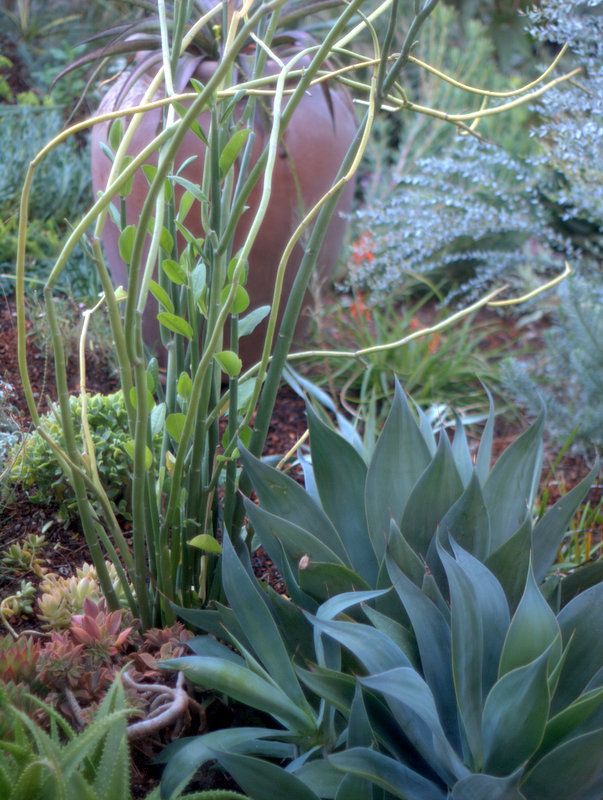
It was from this clump of Agave ‘Blue Flame’ that I removed that pup I brought indoors. Lots more thinning to do here.
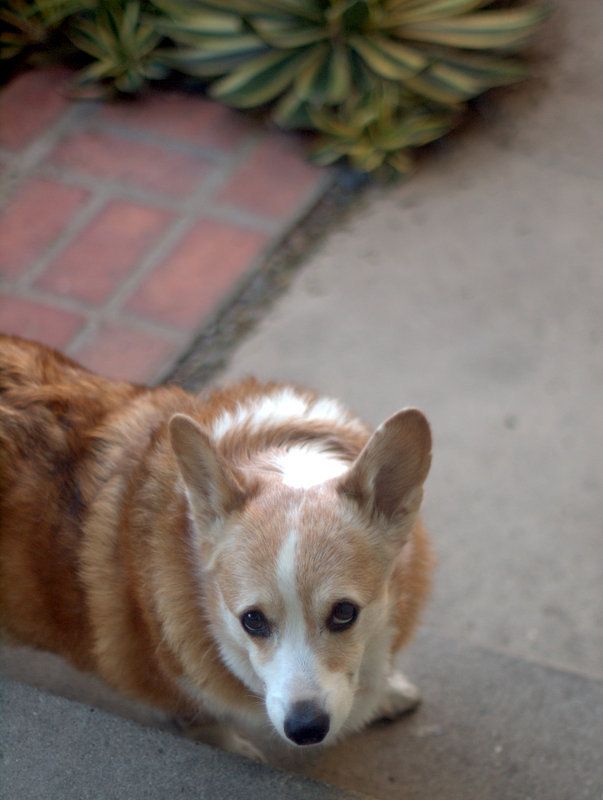
You done with plants yet?
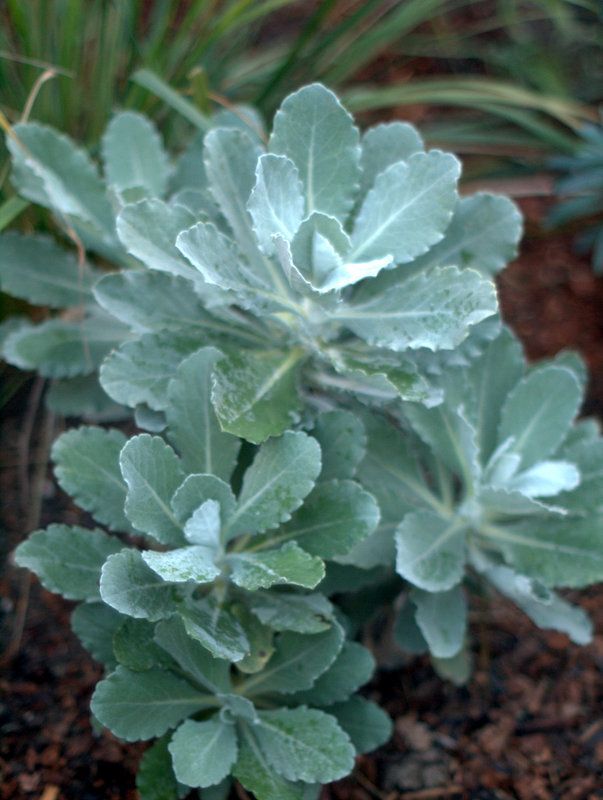
Hardly. This Island Bristleweed has impressed me mightily. From our Channel Islands off the coast of Ventura, Hazardia detonsa. A beautiful reminder of one of the most harrowing sailing adventures I ever endured, nearly going aground on a rocky reef one dark and stormy night off Santa Rosa Island. The Channel Islands are notorious for storms blowing up fast and furious.
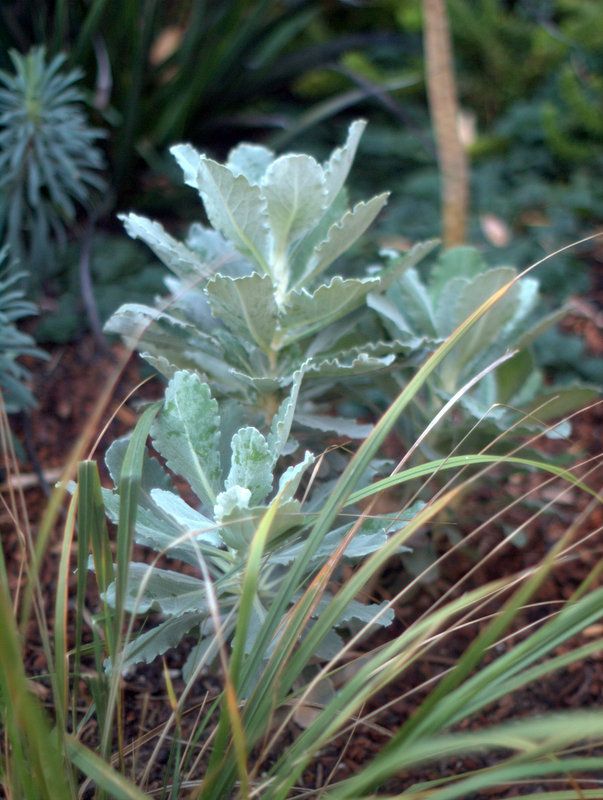
I love its crimped silver leaves. There’s a chance that blooming could turn it into a ghastly mess, so it’s too soon to give it an unequivocal recommendation. Foolishly planted in July, along with other silvers like verbascum, it’s been thriving ever since. Which is more than I can say about the verbascums, which were done in by the unremitting muggy heat.

Bored with me focused solely on plants, Ein heads for the house.
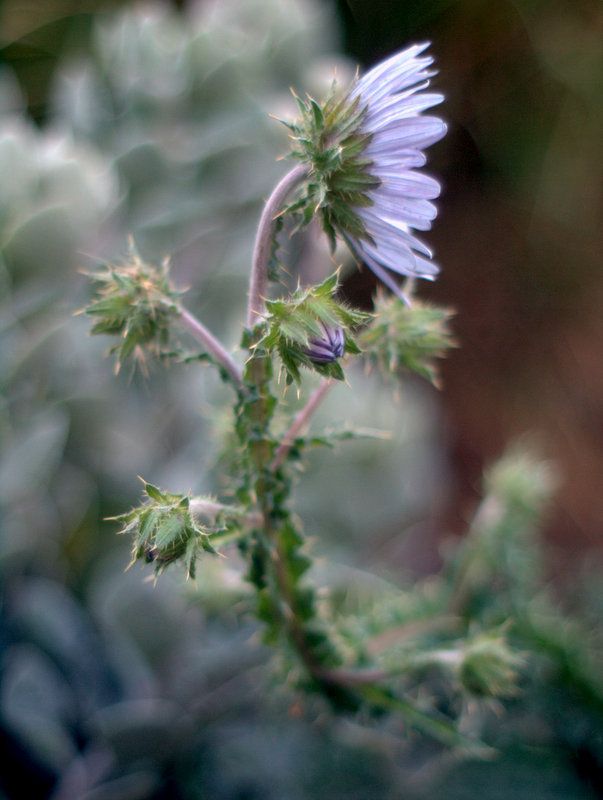
Silly creature. Who could possibly get bored with plants, with Berkheya purpurea throwing a surprising bloom stalk in November?
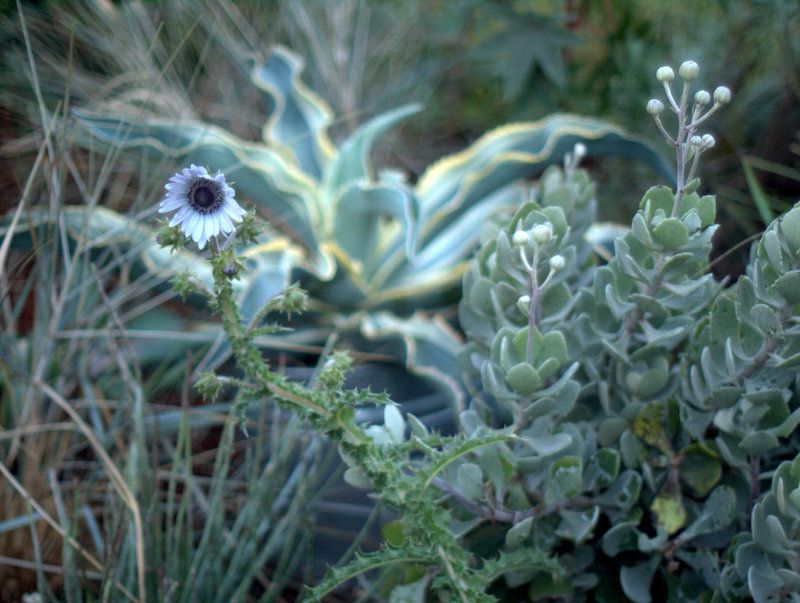
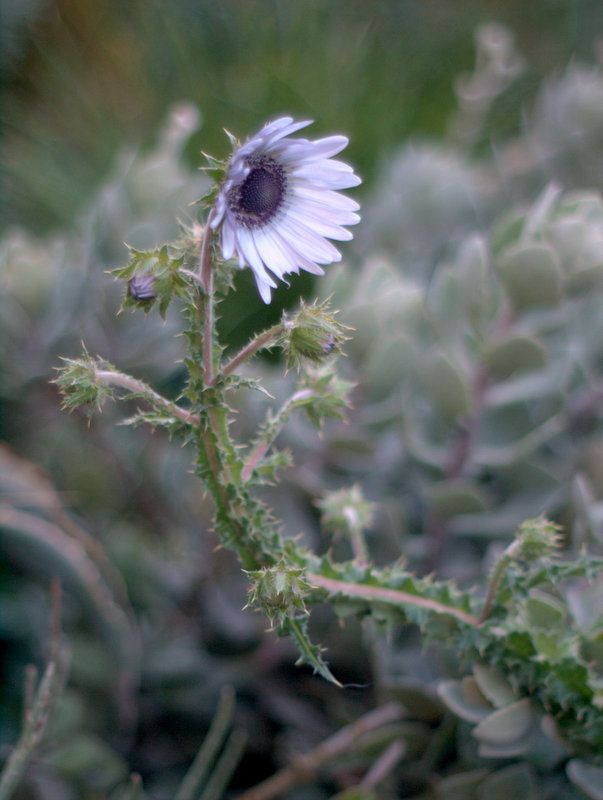
I love thistly, bristly plants and have tried dozens. Very few thistles like my garden. I could grow an artichoke, I suppose, but they’re massive plants. On a smaller scale, a native thistle, Cirsium occidentale, seemed briefly promising but always collapsed just as it threw its first bloom, as if exhausted by the effort.
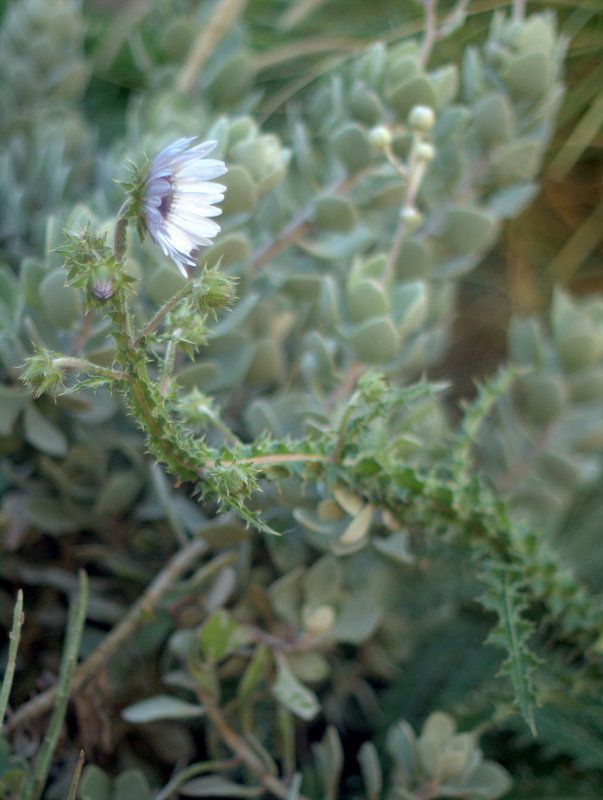
Berkheya couldn’t be further from exhausted. Its snaky stems exude rambunctious energy. Getting through one summer, especially a very hot and dry one like 2015, is quite the accomplishment.
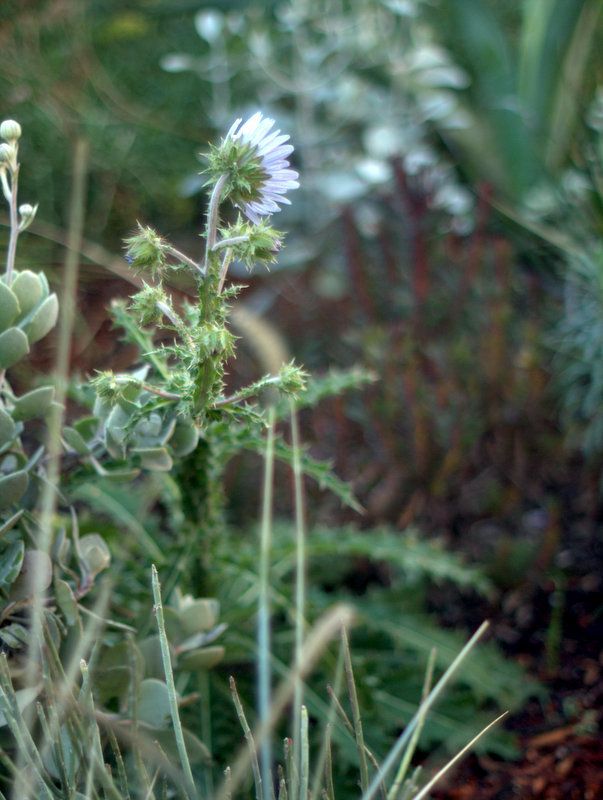
Brought home from Cistus Nursery summer 2014, it’s spread into several clumps.
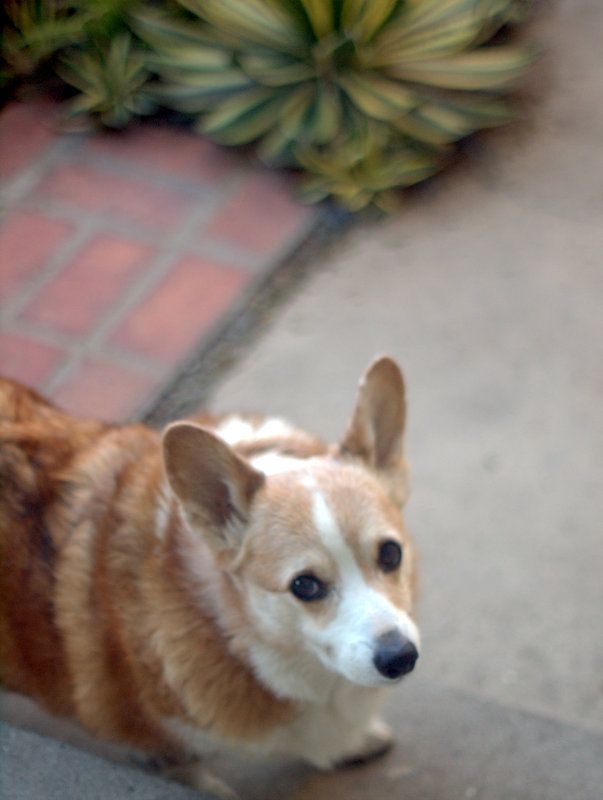
Okay, something tells me it’s time to put down the camera and grab some kibble.
A couple of loose ideas came together this morning in a slowburn, sleepy kind of way. I’ve been envious of large stands of Agave attenuata around town, wishing I could grab a crown for dramatic inclusion in a large vase, but that would be stealing. Even though the plantings are congested and no one would miss one of dozens of rosettes from a neglected parkway. That is still, by definition, taking without permission. The second idea was the long-delayed matter of thinning a congested planting of Agave ‘Blue Flame’ of my own that was encroaching on a nearby aloe. I tackled that project this morning. I admit there were a few blank seconds where I failed to recognize the real-time intersection of these two ideas as I sawed away at the agave, which is after all an attenuata hybrid. I stared at the rather nice-looking rosette severed from the main plant for a few seconds and thought what a shame it was to waste — oh, wait a minute. Right! Now, which pot would be heavy enough to support it?
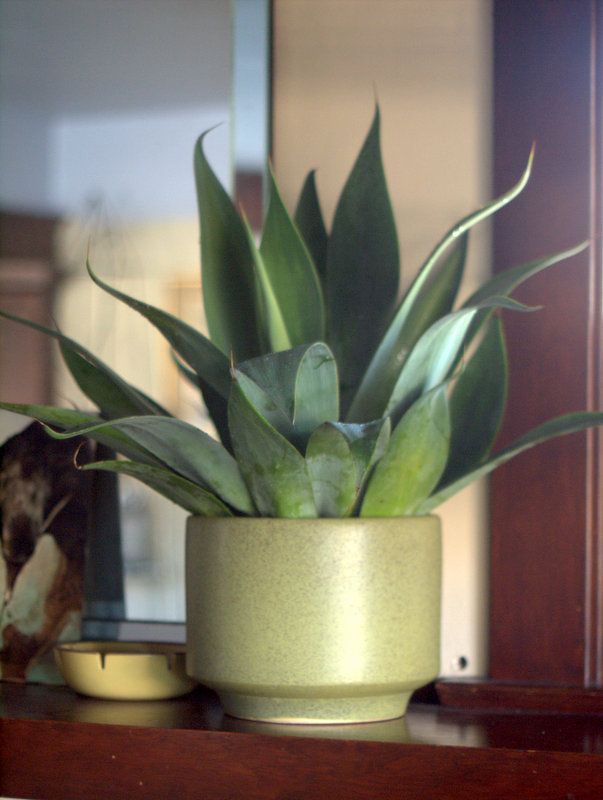
There was a tiny bit of root attached to the stem, so I filled the pot with water. My agave-as-sweet-potato experiment.
The rim supports the rosette and keeps the stem from being squashed against the bottom of the pot.
But a big glass vase, maybe even a Sparkletts bottle, where the stem and roots (if any) can be viewed would be interesting too.
More random brainstorms and Wednesday vignettes can be found at Flutter & Hum.
A blustery day for a change, this November Bloom Day. I hope it finds you safe and warm. Daytime temperatures dropping out of the 80s have forced the realization that summer is truly over. Yesterday we cleaned the house top to bottom, wiping away a summer’s worth of dust and grime from months of open doors and windows. Furniture was tipped up and floors underneath scrubbed, curtains bundled off to the cleaners. That right there is capitulation to the new seasonal reality of spending more time indoors than outdoors.
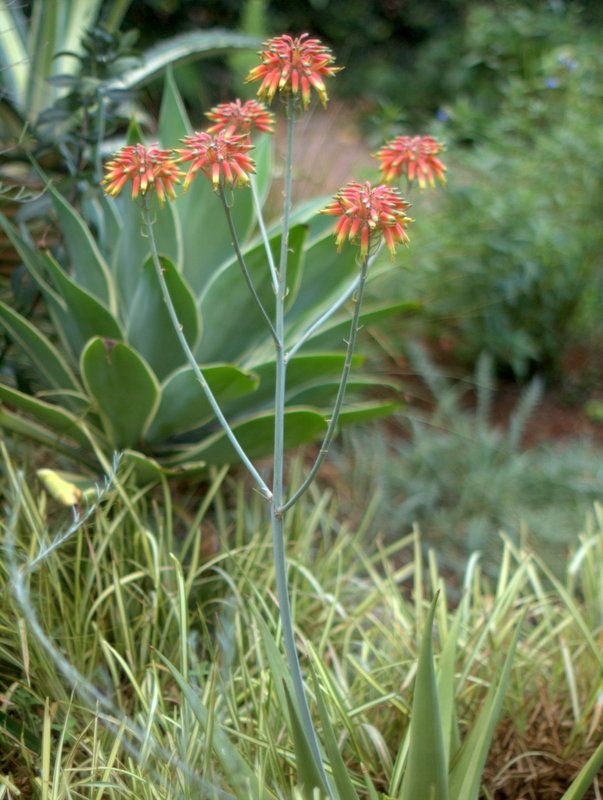
But the short days ahead will have their interesting moments, apart from the holidays looming, especially with the winter aloes waking up. Aloe scobinifolia’s blooms are lasting much longer in the cooler November temps. It bloomed last November and then again this past June.
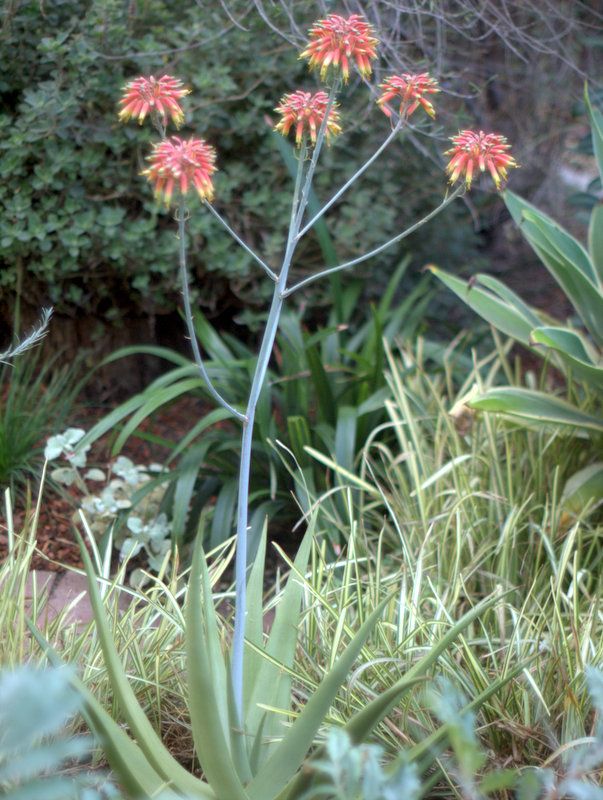
Yesterday I watched a hummingbird dart in and out among the flowers, finally choosing to rest on a stem to take a long sip. A nice moment, the kind that seems to come ringed with a halo, leaving a charged atmosphere for a few minutes or so afterward. And then the phone rings or there’s a knock on the door and, poof, the halo dissolves.
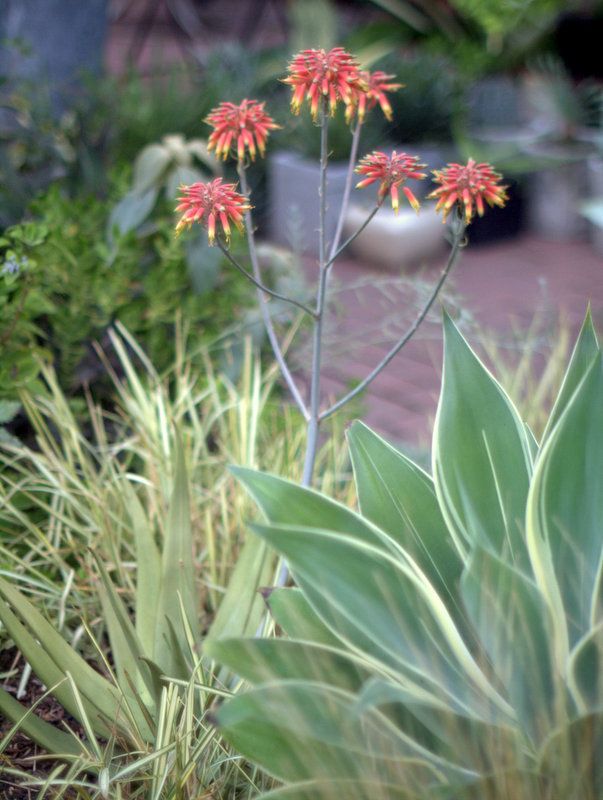
The surrounding St. Augustine grass doesn’t seem to be inhibiting its vigor, and it may be foiling the ants and aphids. Other stemless aloes, all hybrids, not species, have been ravaged by lethal attacks from aphids, which ants tuck in tight and unseen amongst the undersides of lower leaves close to the main stem. The giveaway comes when the plump leaves start turning into potato chips. A ‘Moonglow’ was taken out in this manner, but I managed to salvage a large cutting that has taken root.
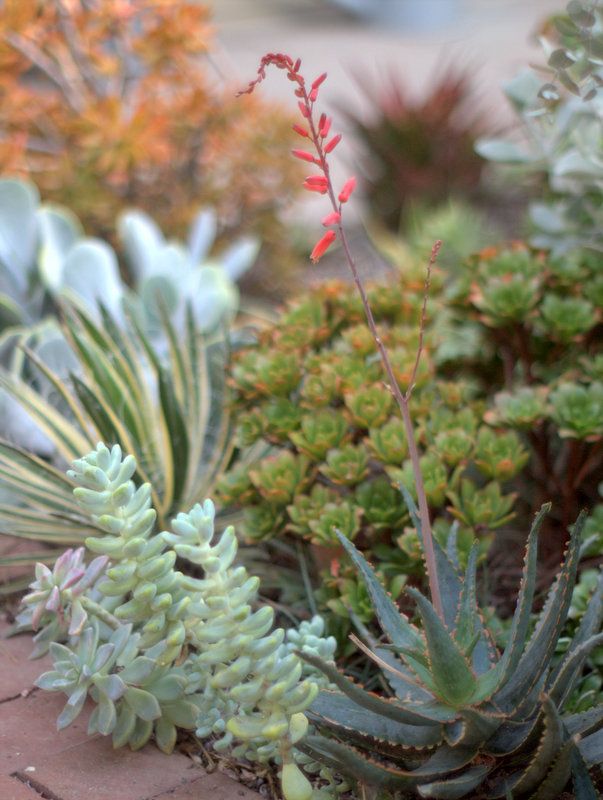
The little hybrids are starting to bloom too. This one came unlabeled, but it might be ‘Christmas Cheer’
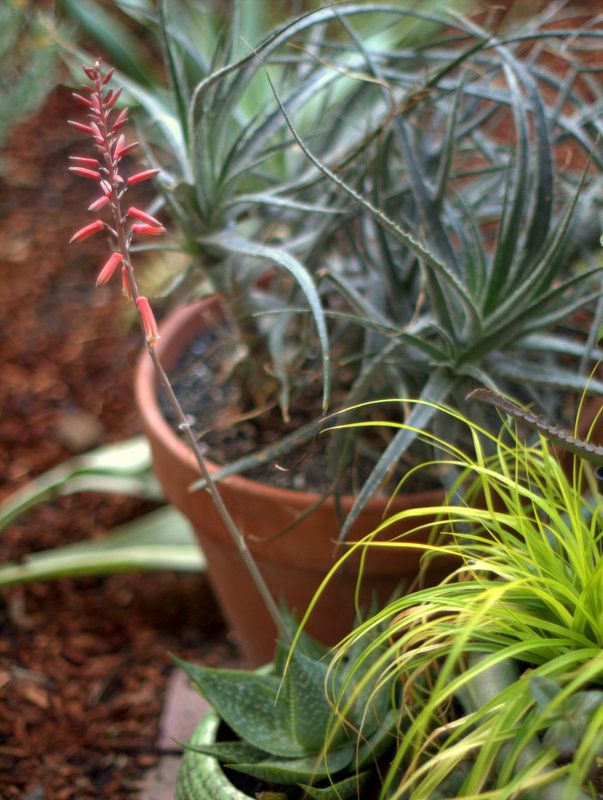
I’m hoping full winter sun will darken the leaves on Aloe ‘Sparkler’
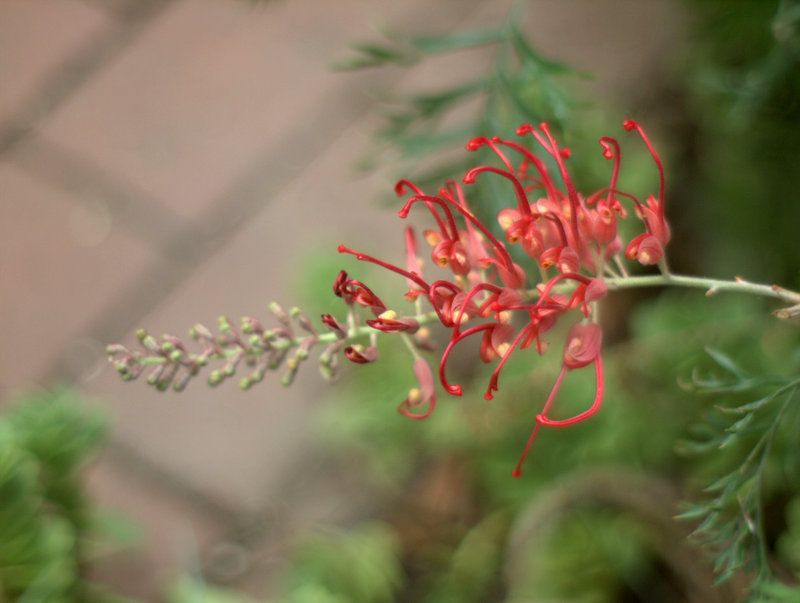
Grevillea ‘Robyn Gordon’
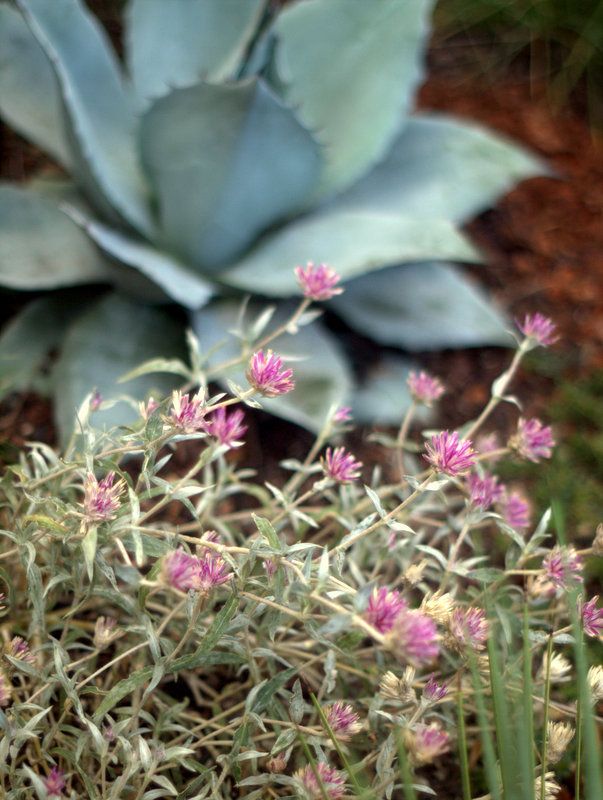
Gomphrena ‘Balboa’ made it through a difficult summer. We’ll see if it has a chance of becoming a staple like ‘Fireworks.’
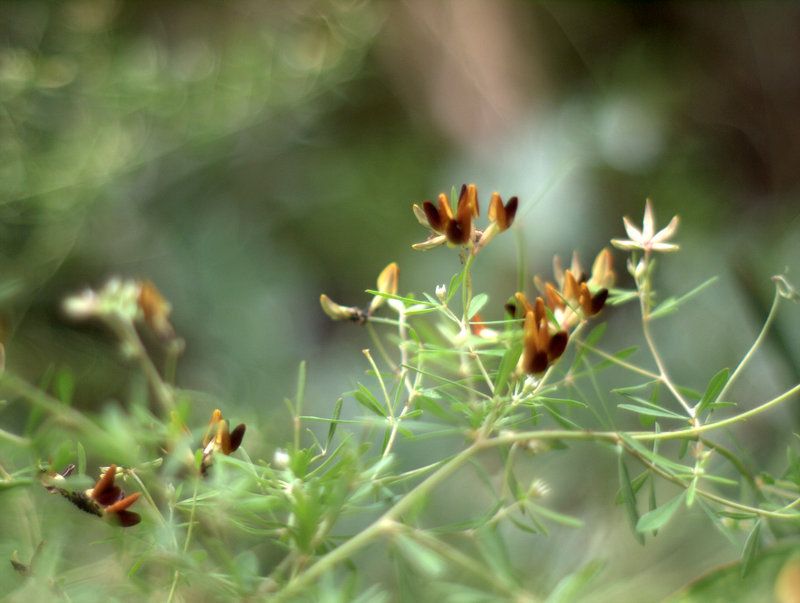
Lotus jacobaeus is glad summer is over, judging by its newly enthusiastic bloom cycle
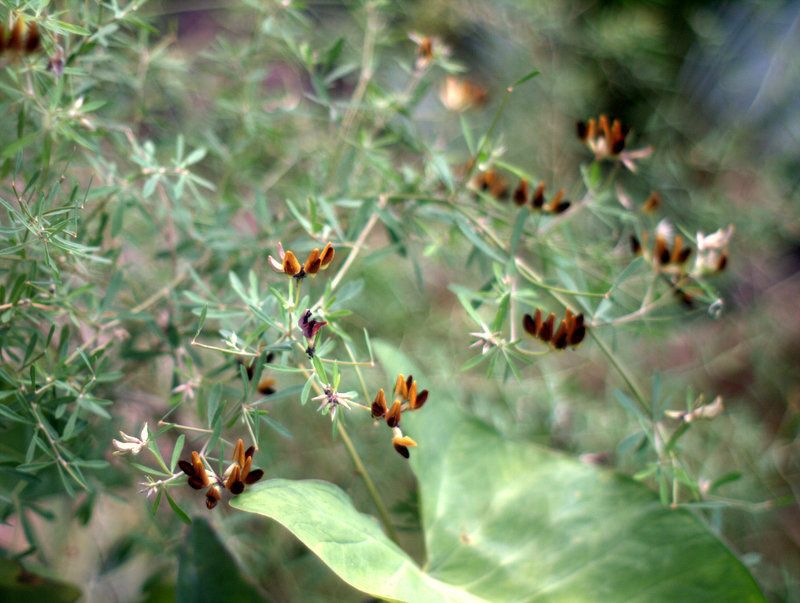
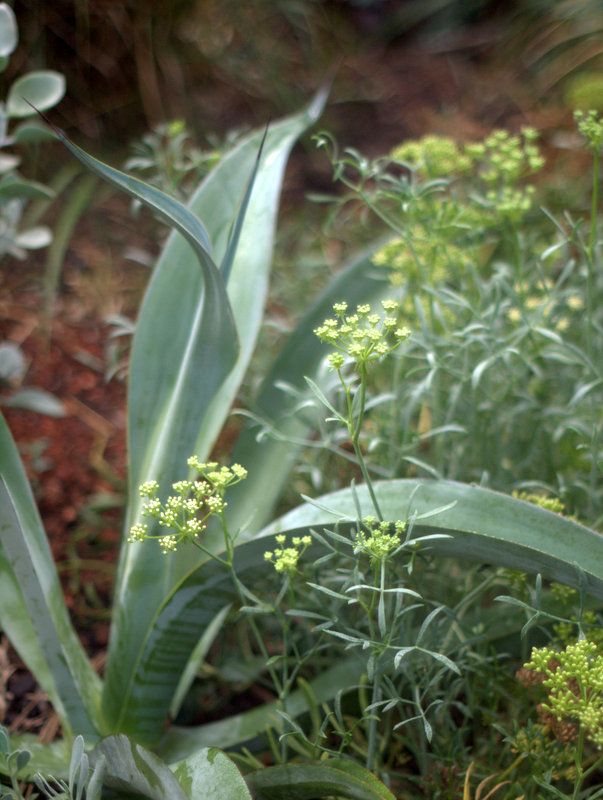
Crithum maritimum is also responding to the cooler weather with another bloom cycle.
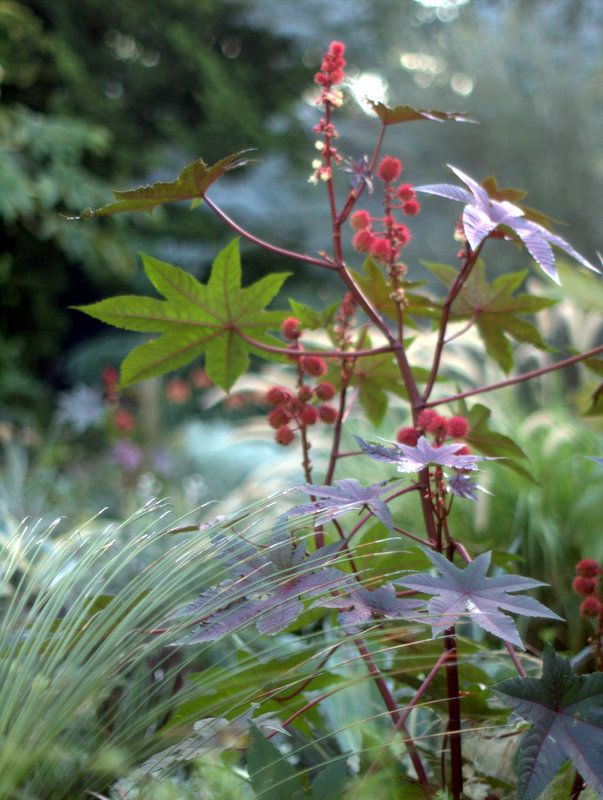
Ricinus communis ‘New Zealand Purple’ with its tiny white blooms and spiky seedheads, brings the crimson-rich color of fall in a tropical form.
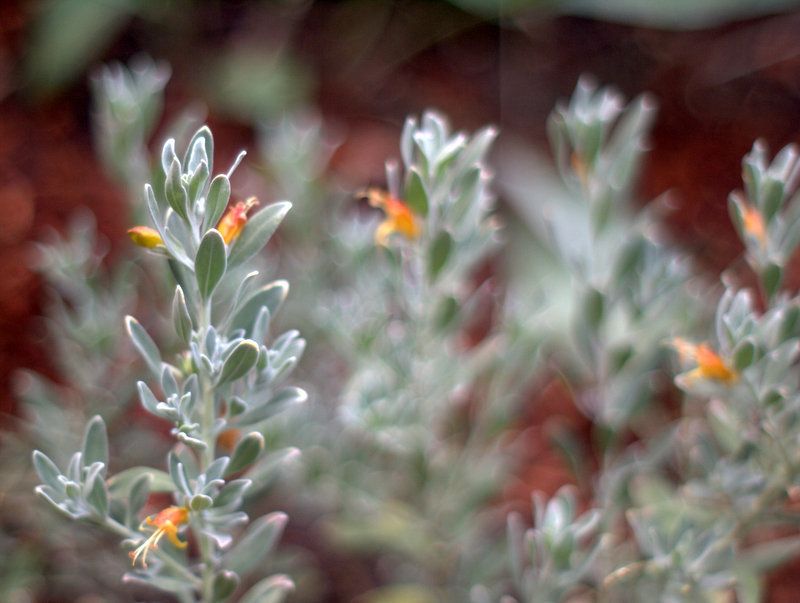
Planted this fall, Eremophila glabra ‘Kalgoorlie.’
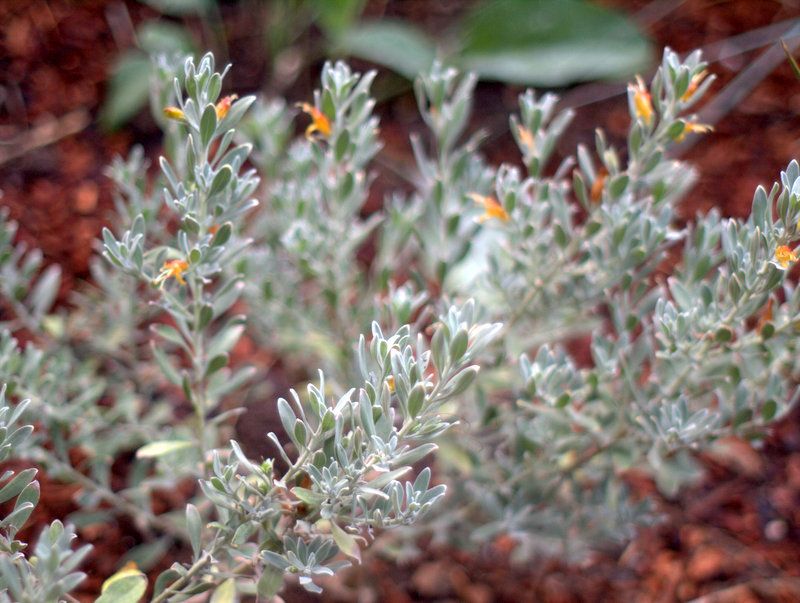
A silver shrub with creme brulee-colored trumpets. I’m very excited to observe this one’s habits of growth next spring/summer.
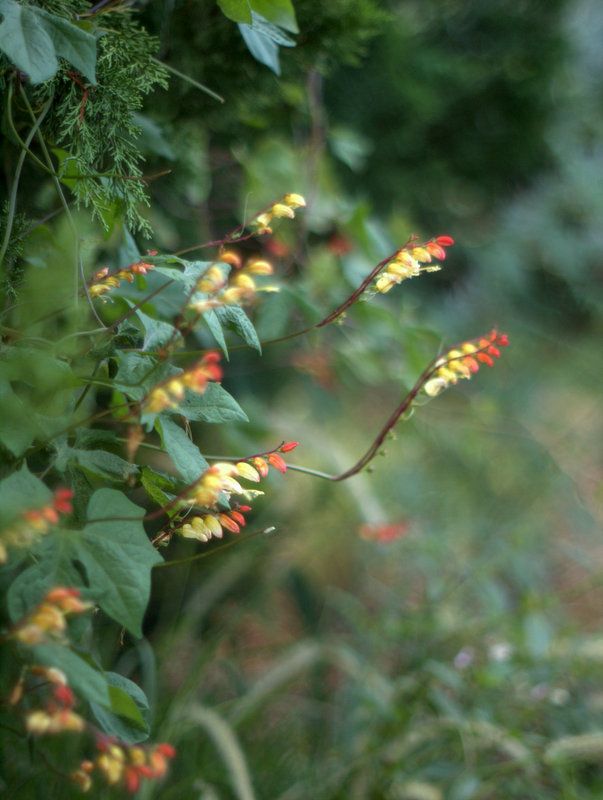
More dessert analogies spring to mind with Mina lobata’s candy corn blooms. This vine can be perennial in mild climates, so I have hopes for more from the Spanish Flag next spring.
I know spiky agaves in the garden make some people nervous, but lovers of architectural plants for the dry garden can get into a lot more trouble than an agave. The golden barrel cactus has recently gotten under my skin, figuratively speaking only, thank goodness. Echinocactus grusonii holds the dubious distinction of being one of the most familiar yet endangered cactus planted around Southern California. Illegal collecting and the building of the Zimapan Dam and reservoir in its native Hidalgo, Mexico, haven’t helped matters. Indeed, Jim Folsom, Director of the Huntington Botanical Garden, believes it is probably no longer to be found in the wild.
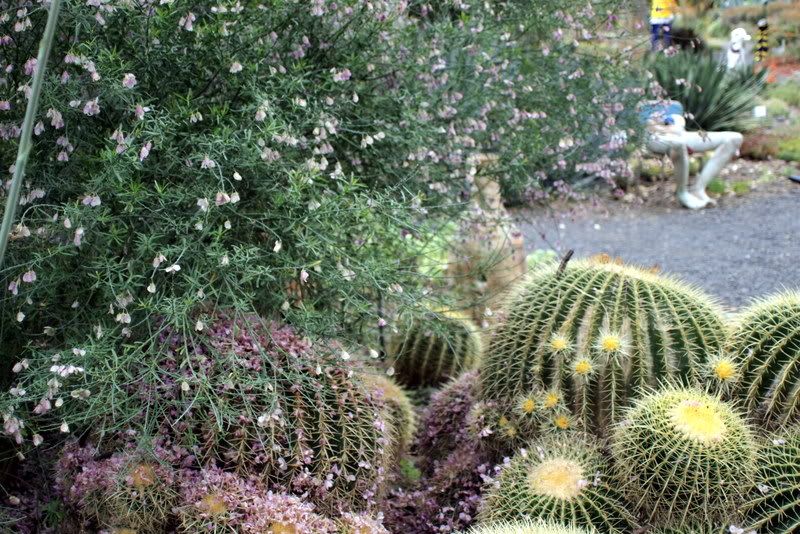
Golden barrel cactus at the Ruth Bancroft Garden
Regrettably, I have only one golden barrel cactus to roll out, to test its light-splintering qualities this fall, now that light and wind have replaced heat as the big news in the garden. I plug pots of agaves into the garden all the time as the seasons (or my itchy digging fingers) open up space for their big sculptural rosettes. But this is a first for me, temporarily moving a potted barrel cactus into the garden, and that’s for a couple reasons. In my experience, barrel cactus are rarely used as specimens and are almost always planted in groups. Would just one look silly? And, secondly, Echinocactus grusonii deals with any absent-minded mishandling quickly and savagely, inflicting a “dirty wound,” prone to infection. So why risk it, you say?
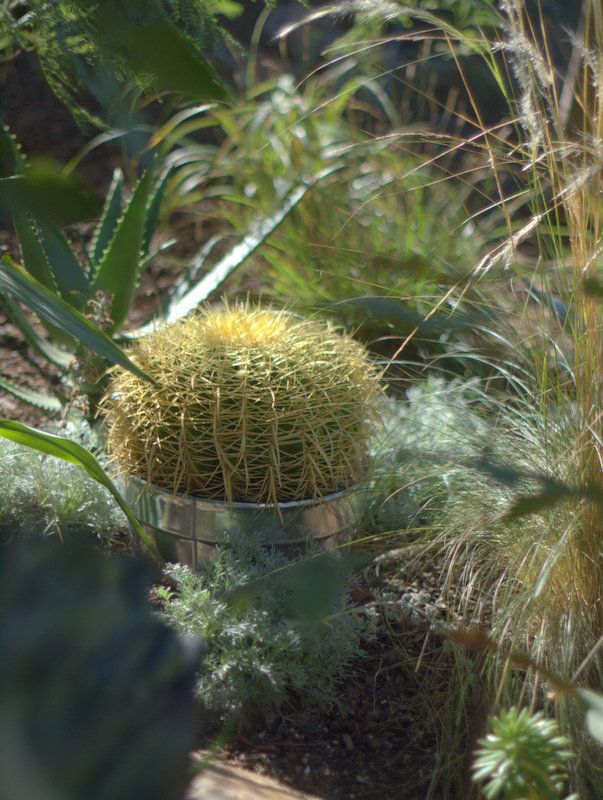
The key word is “golden.” It has a wonderful solidity, but all those golden spines arrayed like hundreds of tiny propellors impart a surprising lightness too. Doesn’t that silver pot make it look like a prickly loaf of rising bread? Placement of cactus in the landscape does bring up valid concerns for pets and children. My little experiment is in a spot safe from wandering corgi paws.
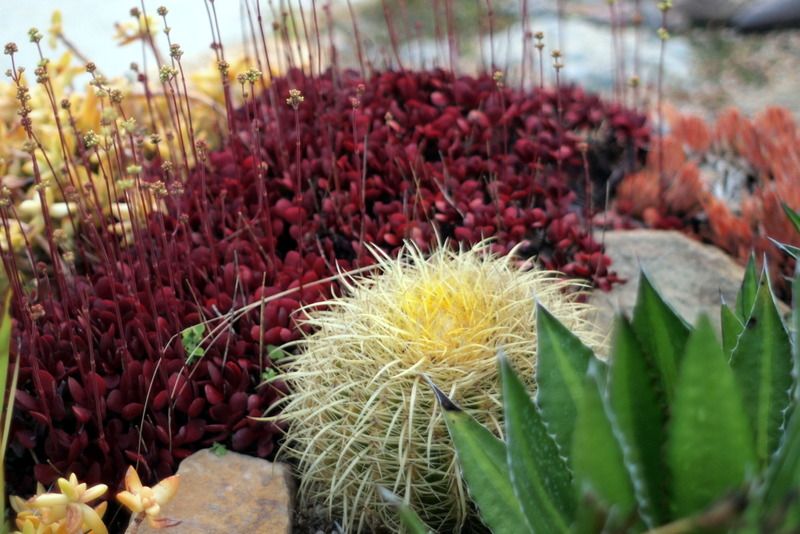
As far as planting as a specimen versus in groups, I’m still undecided. Here golden barrel cactus is a specimen with fiery red Crassula pubescens ssp. radicans. I am so not ashamed of wanting to steal this idea.
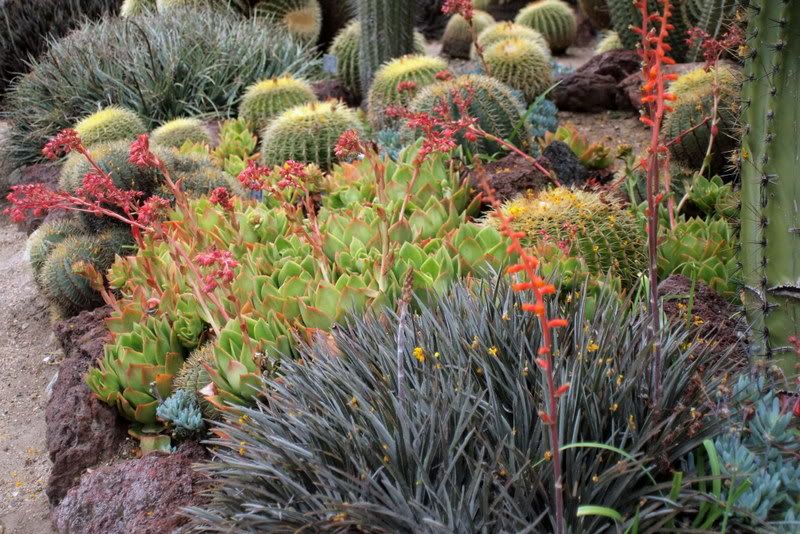
With dyckias and Echeveria agavoides at the Huntington’s Desert Garden.
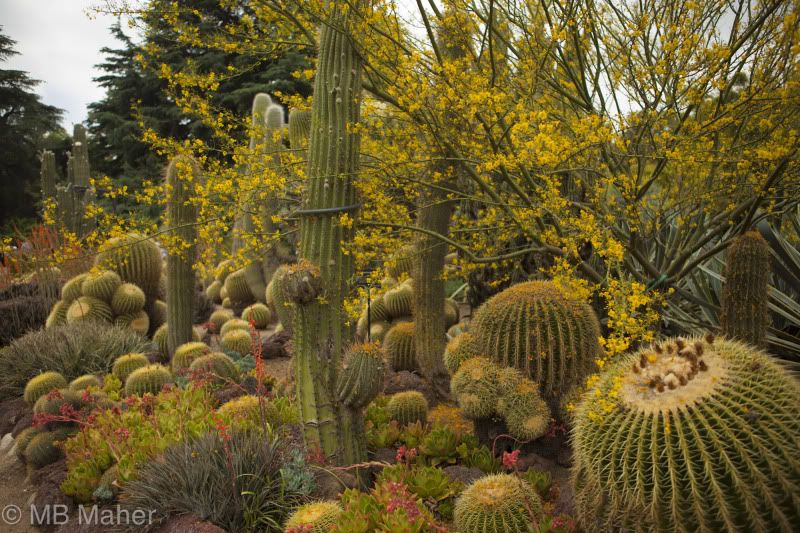
The same area stepping further back, when the Palo Verdes were in bloom, photo by Mitch.
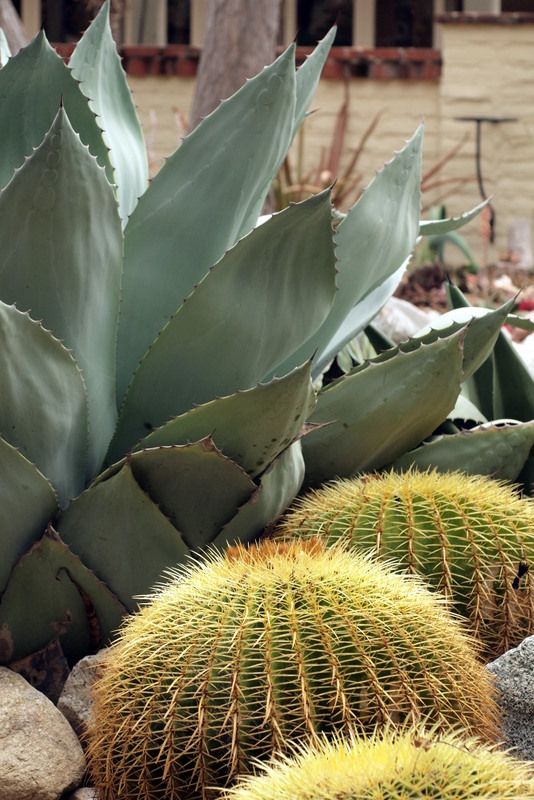
A group of barrel cactus with the whale’s tongue agave (A. ovatifolia) at the Sherman Gardens.
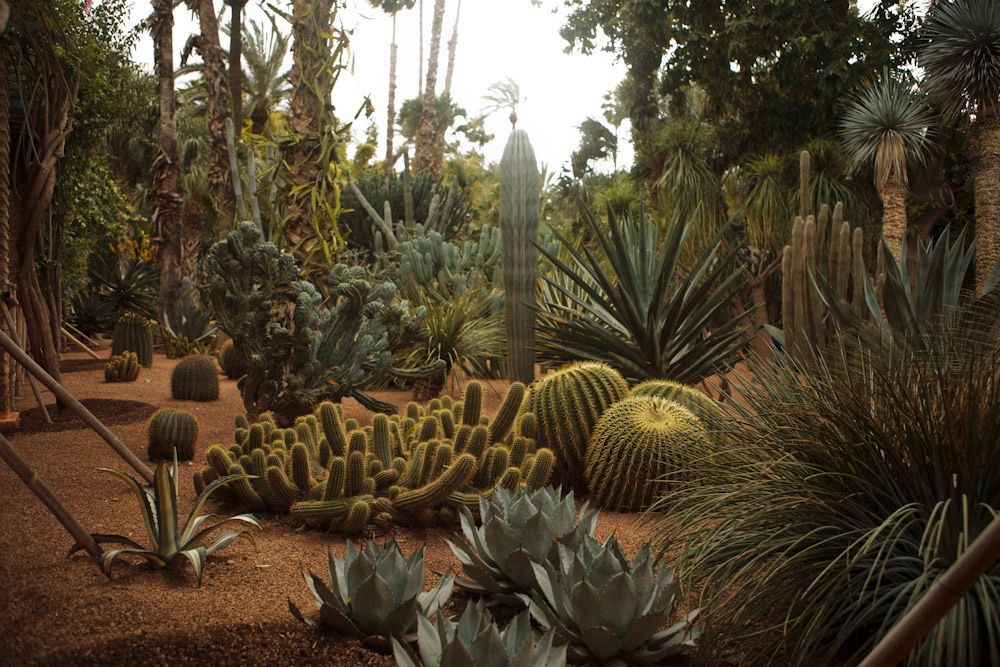
A small group as an accent in a complex planting at the Jardin Majorelle in Morocco, photo by Mitch Maher.
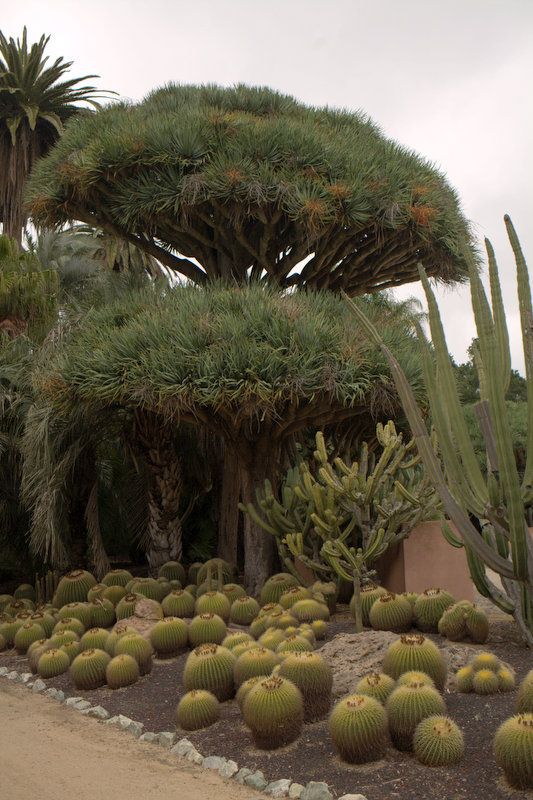
With Dragon Trees at Lotusland.
This cactus grows readily from seed, maturing to flowering size in roughly 15 years. The Getty in particular has a spectacular mass planting of this cactus.
I treated myself yesterday to San Gabriel Valley’s Cactus & Succulent Society‘s show and sale at the Los Angeles Arboretum.
I bought no plants this time, just circled the show tables over and over, sometimes because the show plant was that engrossing and other times just to get a shot after the crowd parted.
At the sales tables I did a quick phone search on Aloe castilloniae, which seemed to be everywhere for sale, the species and some hybrids. There’s not a lot of info available on it.
(Here’s an entry with a good photo I didn’t catch on my phone: Aloe castilloniae)
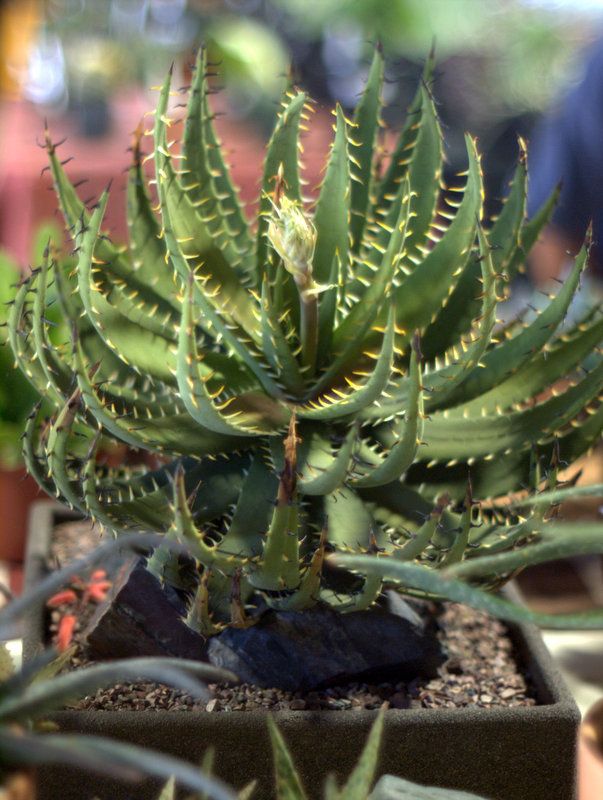
This Aloe melanacantha with a flower bud was the first show plant to stop me in my tracks.
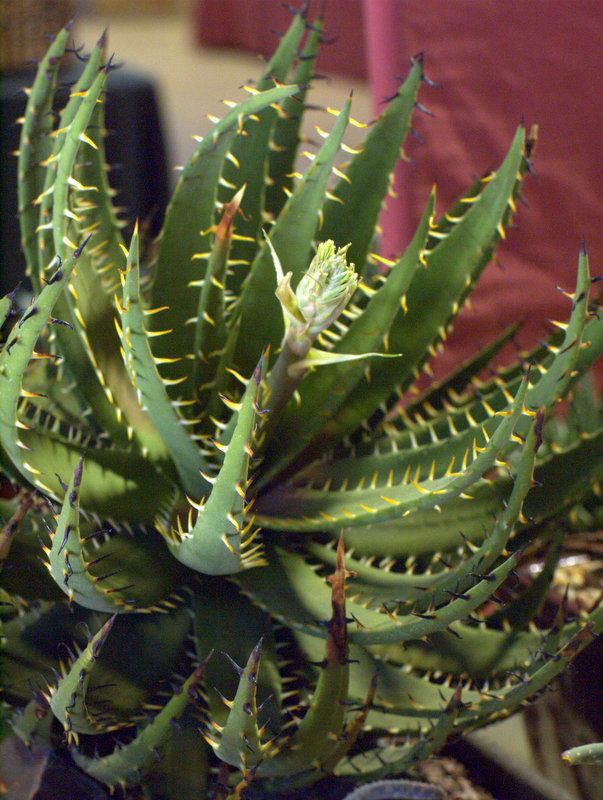
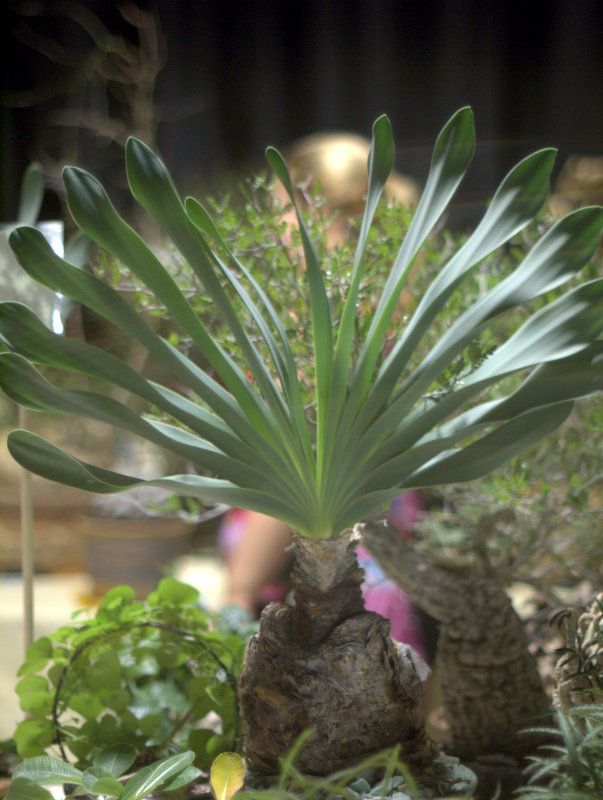
I always find the boophanes so expressive. I really need to repot mine to elevate the bulb.
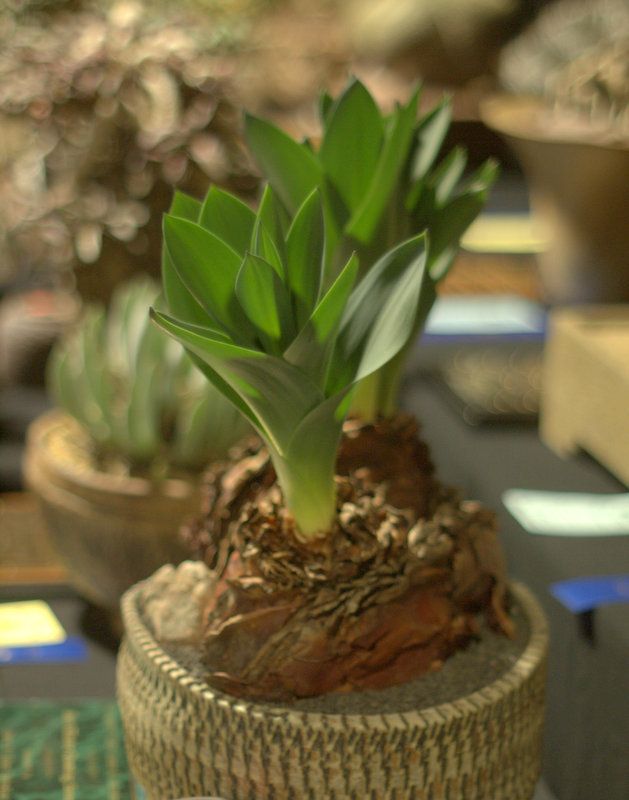
Urginea maritima, the gigantic Sea Squill in a tiny pot. Who knew?
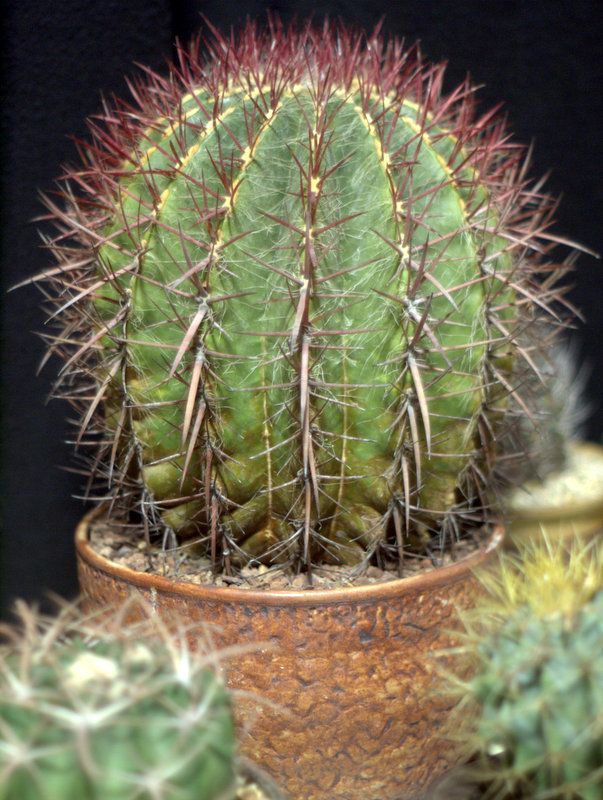
I didn’t always snap the names of the cacti. In the past I’ve been known to rush by these tables but am starting to find them so absorbing visually.
It can bring quite the endorphin release to stand before a beautifully grown cactus such as this.
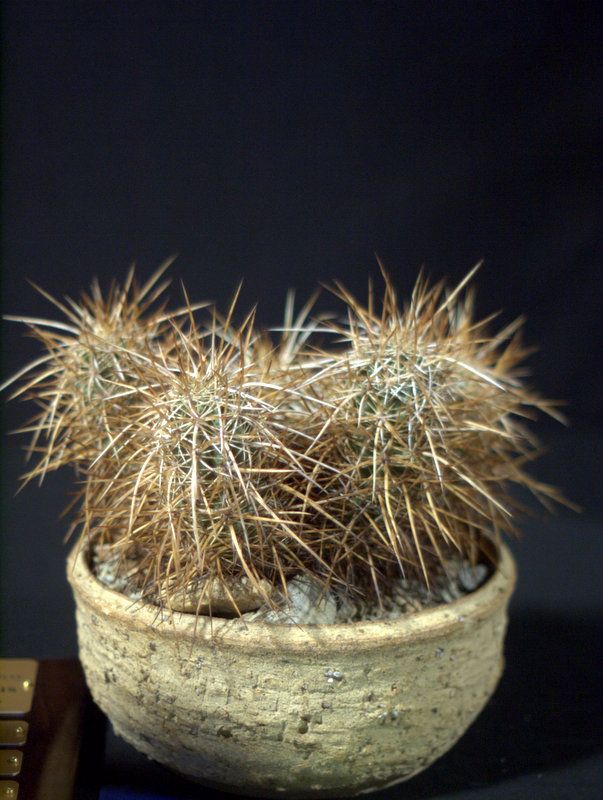
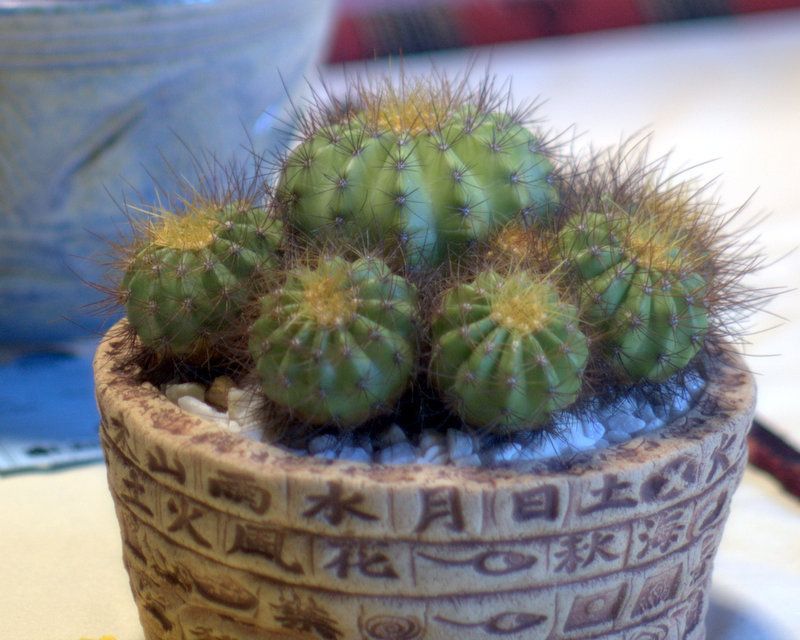
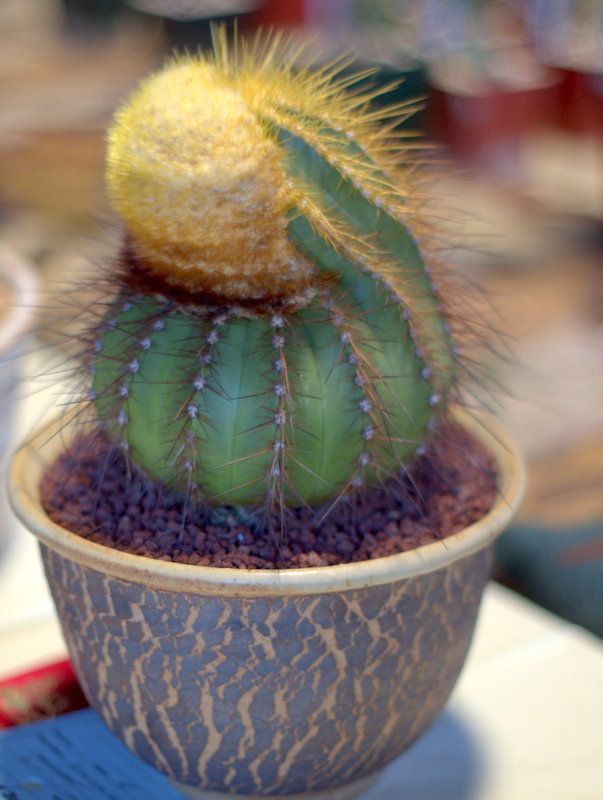
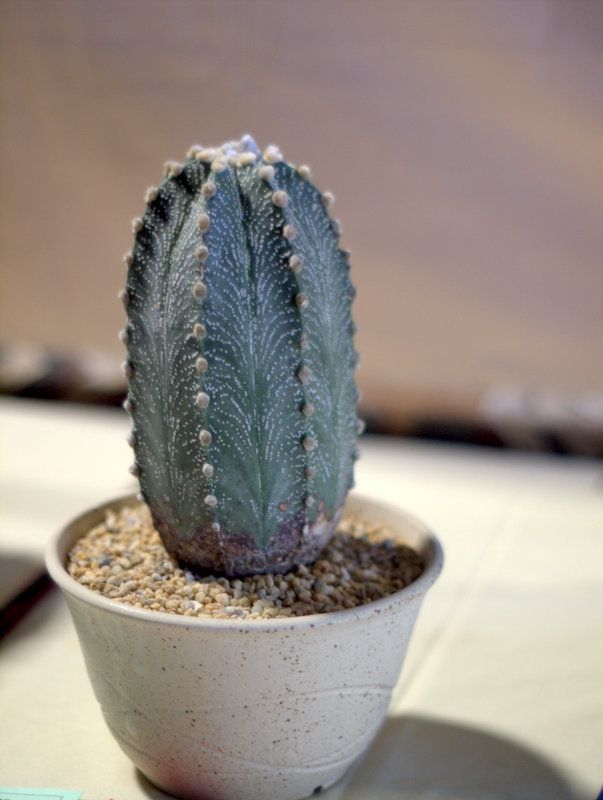
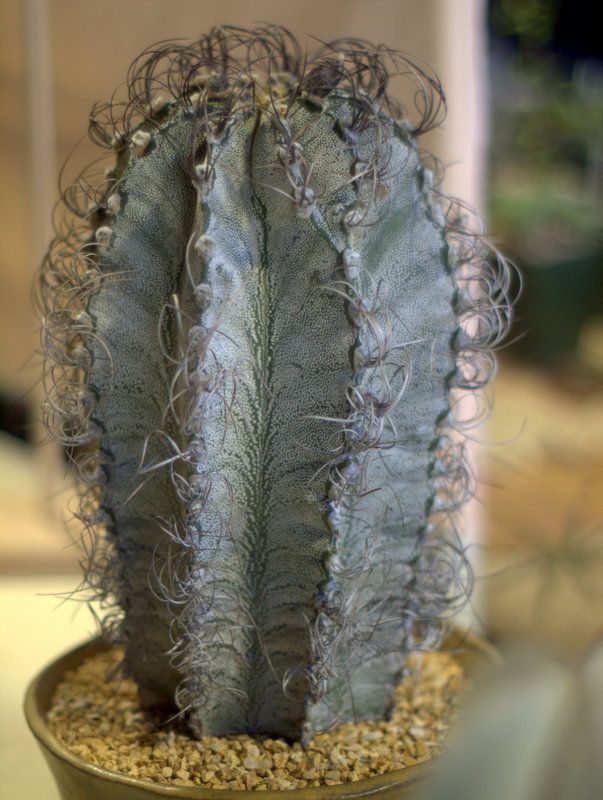
I had to check the name on this wild thing: Astrophytum capricorne var. niveum
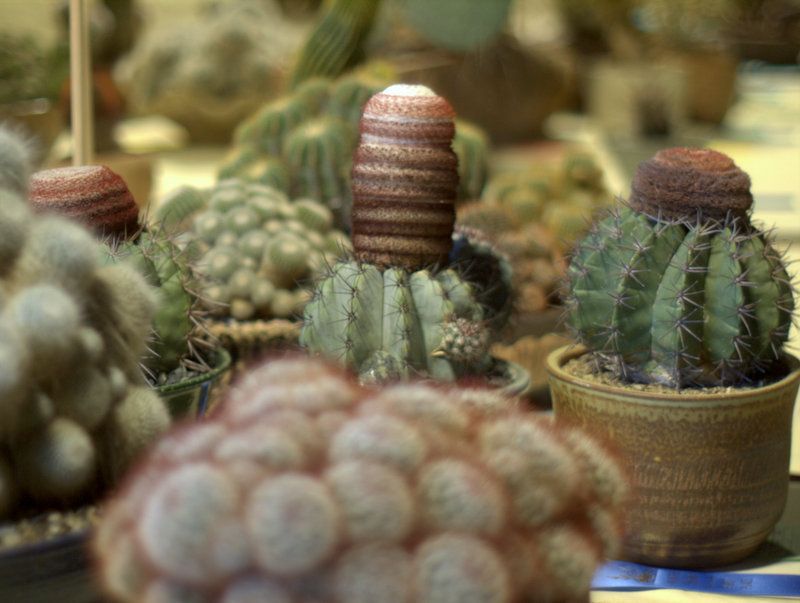
From the melocactus table
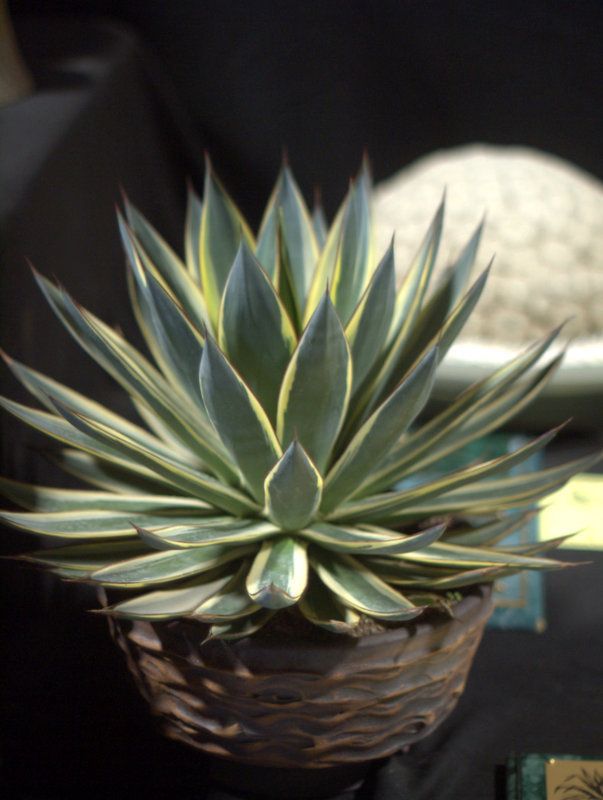
I’m on firmer ground with the agaves. Agave ‘Snow Glow’
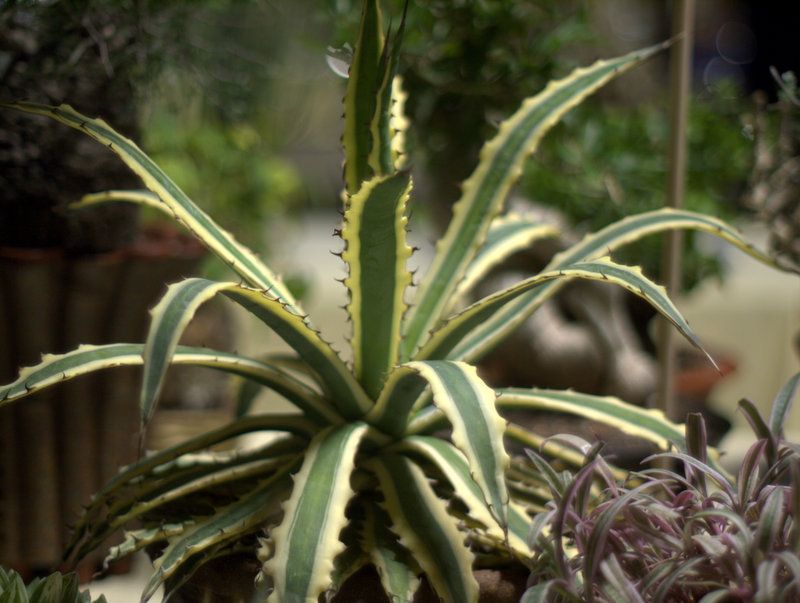
Agave xylonacantha ‘Frost Bite’
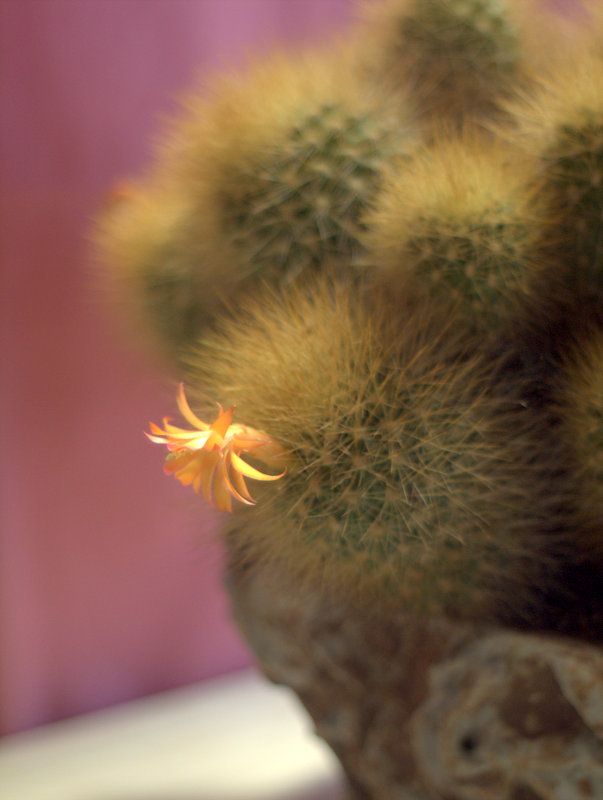
And so ends the plant show and sale season of 2015. Thanks to all who’ve shared their beautiful obsessions.
I could only remember that Heather had blogged about it blooming in her zone 7 Portland garden in spring, which turns out is all I needed to remember.
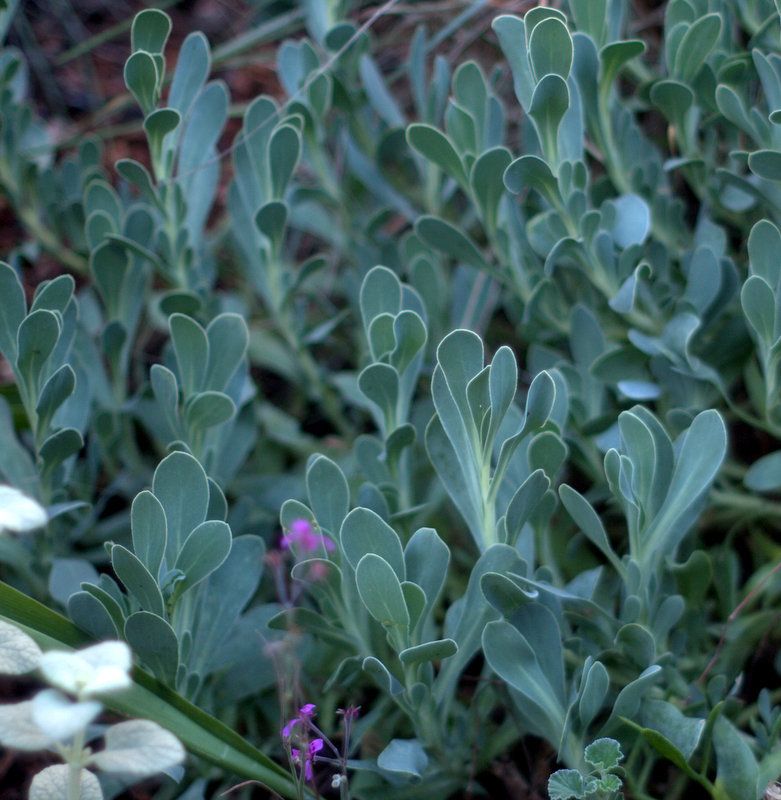
Othonna cheirifolia, native to South Africa, chalky blue, spatulate leaves, going by the piratical-sounding common name of Barbary Ragwort.
Small yellow daisies in spring are less compelling than the carpet of glaucous leaves that remains year-round in my zone 10.
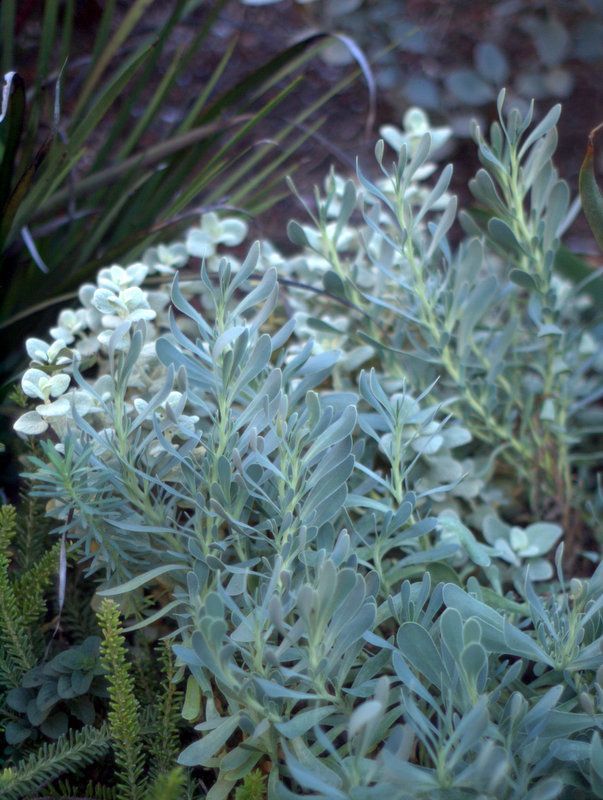
To get a sense of just how blue othonna is, see its chalky blueness growing next to bright green Grevillea ‘Mt. Tamboritha.’ White felty leaves of ballota in the background.
Together with their strikingly blue color, the slender, smooth-edged, spoon-shaped leaves effortlessly set themselves apart in a jumble community of plants.
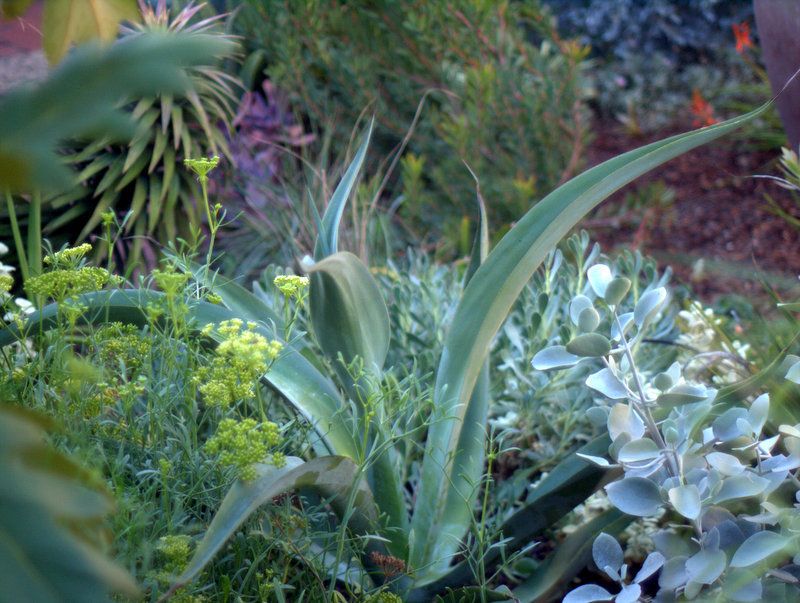
Growing at the base of a young Octopus agave (A. vilmoriniana), it’s had as much sun and irrigation as the agave — scorching in regards to the former, spotty with the latter.
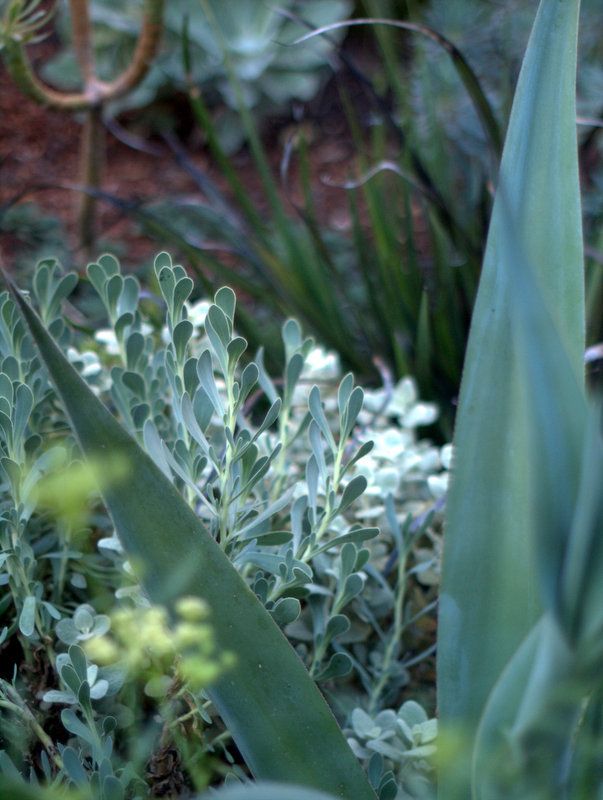
Leaf color just about matches the agave too.
On 12/7/12 I blogged that it was “just found today,” so this is almost a three-year-old clump.
If you’re after blue at a galloping pace, there’s always Senecio mandraliscae, the Blue Chalk Fingers.
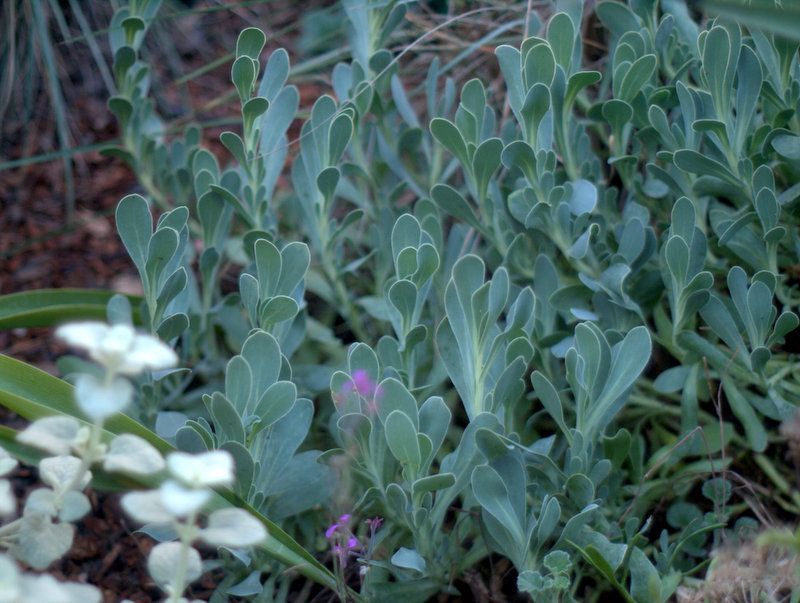
A subtle but remarkably durable plant with a tricky name to remember.
(There’s another othonna with the memorable common name of Little Pickles, a small-scale ground cover with blue succulent leaves, Othonna capensis.)
Othonna, Othonna, Othonna. There…committed to memory at last.
Fall has been stupidly busy, but I’m so glad I made it out to Pomona last Saturday for John Greenlee’s Meadow Grass Fall Festival, the second year it’s been held. Let’s cross our grubby, fall-planting fingers and hope for another festival in 2016. The food was plentiful and tasty, as were the libations. Alas, I couldn’t stay for the evening jazz concert. Now based in the Bay Area, Greenlee still maintains the Pomona property where his grassy ambitions first took root. The festival was attended mainly by designers, and it was an impressively energized bunch. The prevailing mood seems to be that in drought, there is opportunity — especially for garden designers. All were eager to hear what’s new in grasses, what’s working, and what isn’t. John Schoustra of Greenwood Gardens covered daylilies, irises, and pelargoniums, and made an impressive case for the bioremediation qualities of daylilies in the landscape. I loved the tallest daylilies with the smallest, simplest flowers, like ‘Salmon Sheen,’ which is heresy to true aficionados. Schoustra’s preference is also for daylilies that read well in a landscape and not for all the ruffles and sparkles that require close-up inspection on bended knee.
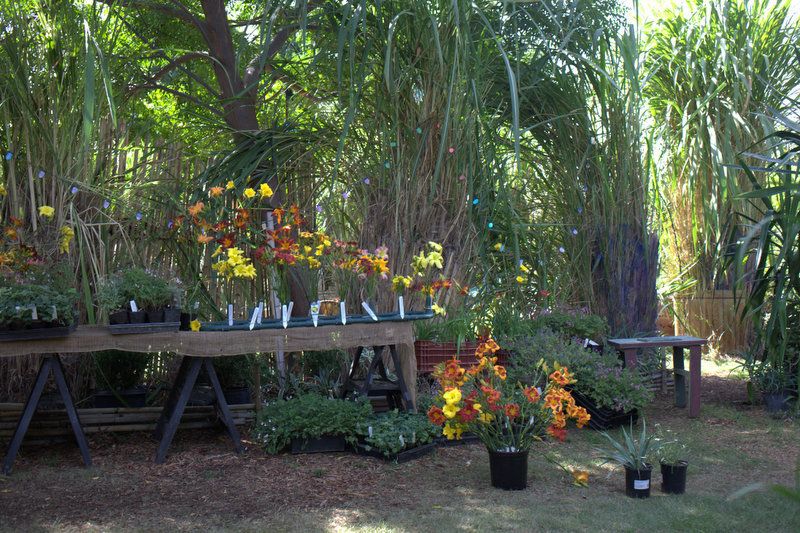
Although I don’t know him personally, our paths have been crossing ever since our kids attended the same private school in Long Beach.
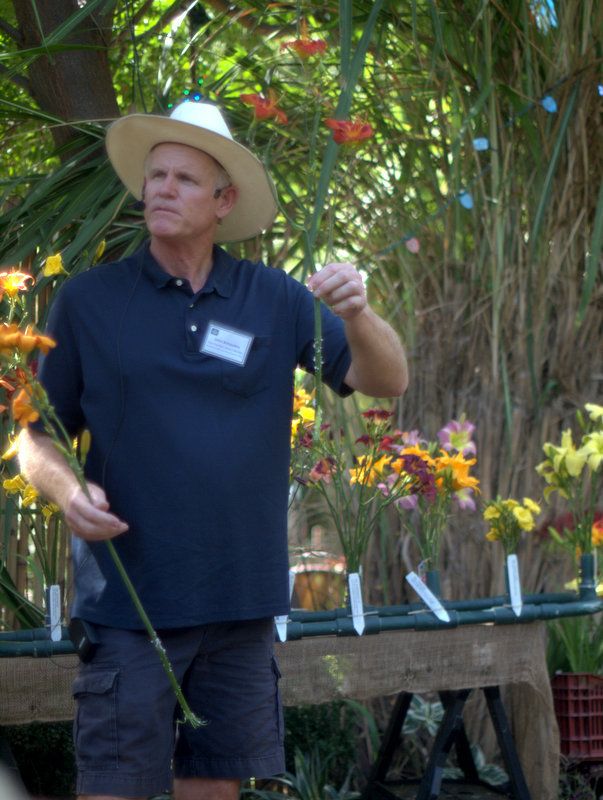
I well remember the Greenwood van parked at the curb of the old, two-story wooden house where Mitch and Duncan attended elementary school. Resourceful old houses can double as schools, plant nurseries, like Greenlee’s house on its enormous lot in Pomona. I arrived late (after getting a bit lost) so missed the opportunity to wander and take some photos of his bamboo-covered garden.
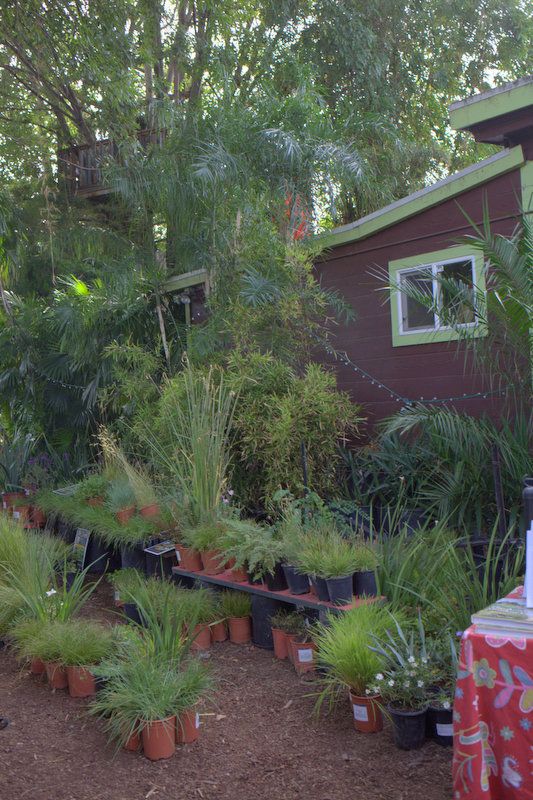
Part of the sales tables near the house
It can’t come as any surprise by now that I’m an incredibly easy mark when it comes to plants. And for the first time in a while I actually had some empty ground due to the departure of Yucca’ Margarita.’ I brought home, in gallons:
Three Yucca pallida, Mountain States Wholesale Nursery
Two Melampodium leucanthum, Blackfoot Daisy, from MSWN (if you follow Rockrose’s Texas blog, you already know this remarkable little daisy)
Poa cita, a New Zealander that Greenlee feels might be the replacement for Mexican Feather Grass
Euphorbia antisyphilitica, from MSWN (Total non sequitur, but if you’re watching Soderbergh’s The Knick, you’ll be up to date on the gruesome ravages of syphilis.)
Most of these were selected after hearing the very persuasive Wendy Proud of Mountain States Wholesale Nursery list her go-to plants during her talk “Got Some Ground to Cover?” Every plant in her roster carried impeccable dry/tough/gorgeous credentials, so look them up for fall planting and ask for them if you don’t see them at your local nursery:
Acacia redolens ‘Desert Carpet’
Dalea capitata ‘Sierra Gold’
Eremophila glabra ‘Mingenew Gold’
Euphorbia antisyphilitica, which at about a foot tall reminds me of a smaller Baja spurge, Euphorbia xanti
Gossypium harknessii
Melampodium leucanthum
Portulacaria afra minima
Scutellaria sp. ‘Starfire’
Yucca pallida
Yucca rupicola
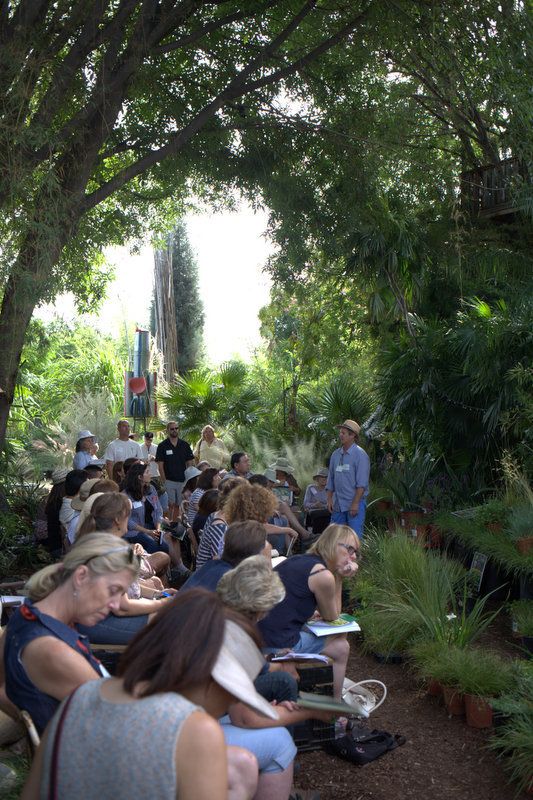
In constant motion and as animated as any meadow grass, Greenlee packed in a dense amount of information during his talk. That’s his selection of true blue Cupressus guadalupensis in the distant background. We were tucked into the narrow, shady former driveway at the entrance to the garden. Temps are still seesawing between upper 80s/low 90s this fall.
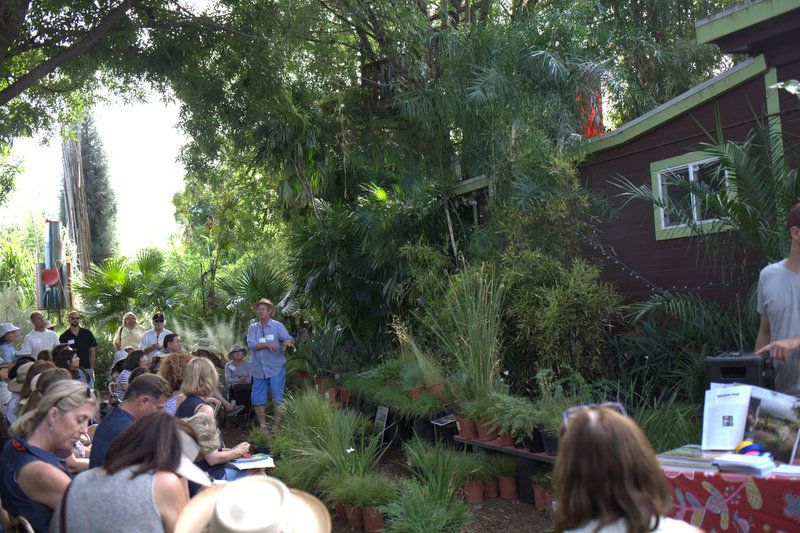
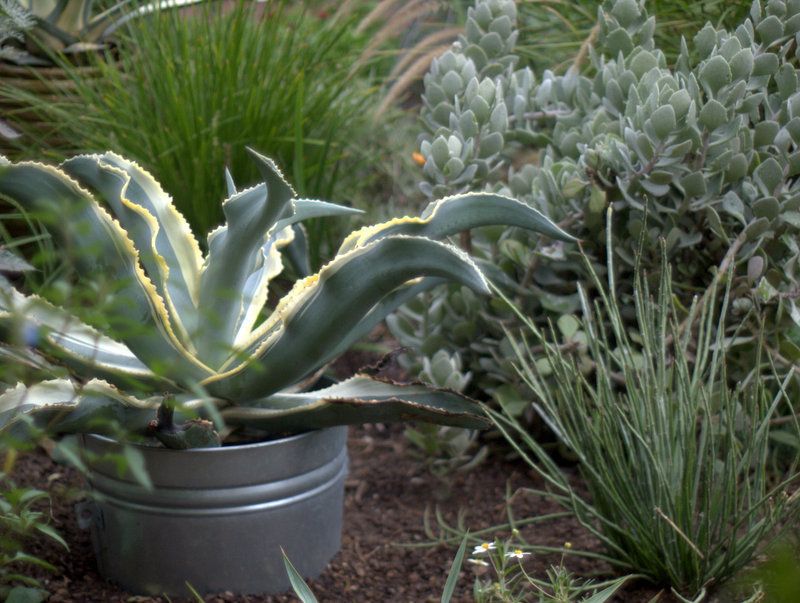
Planted at home, Euphorbia antisyphilitica to the right of Agave gypsophila ‘Ivory Curls’ recently moved here, with a few blooms from Melampodium leucanthum peeking in. I’d like about five more of this euphorbia, which surprisingly can winter through a zone 7. Lomandra ‘Lime Tuff’ in the background has been phenomenal this very hot summer. Grey succulent is Senecio medley-woodii which I cut back a lot to encourage bushiness.
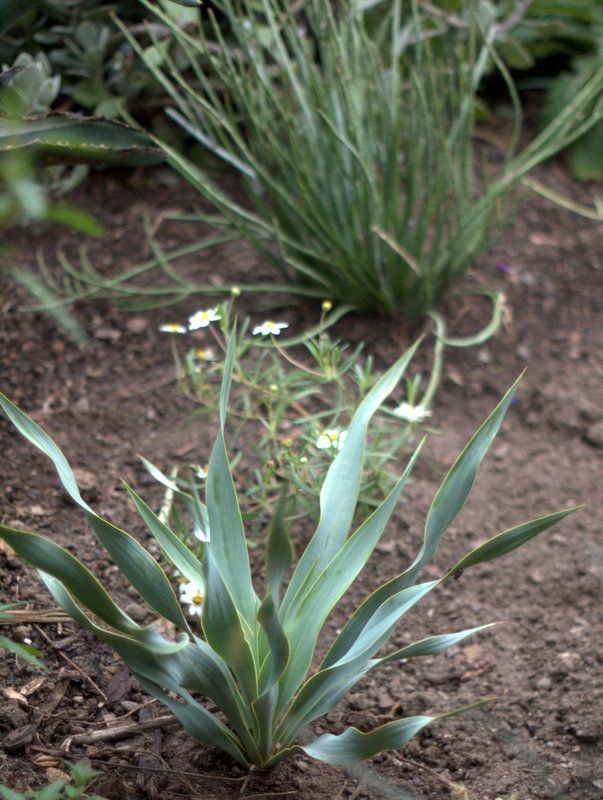
One of the three Yucca pallida, pending mulch. I was determined to find spots where the slanted afternoon light picks up the leaves’ yellow margins
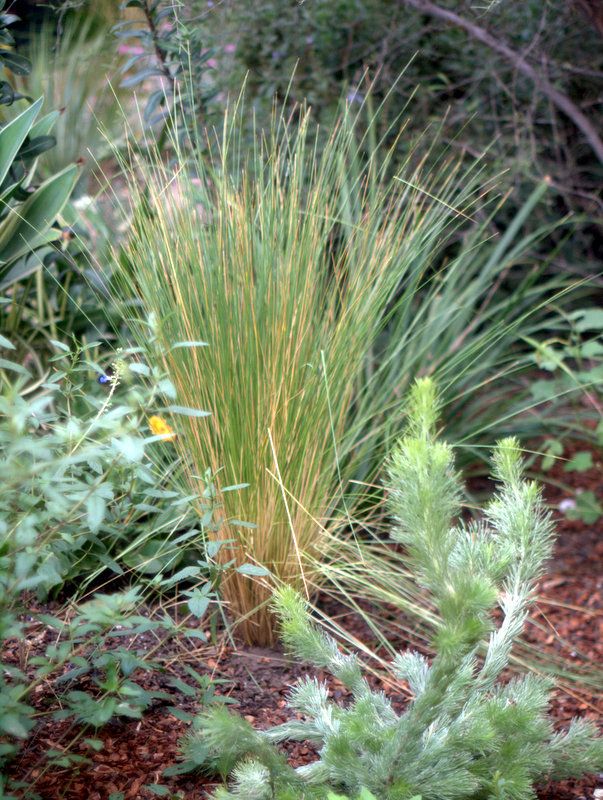
Poa cita, Greenlee’s choice over Mexican Feather Grass
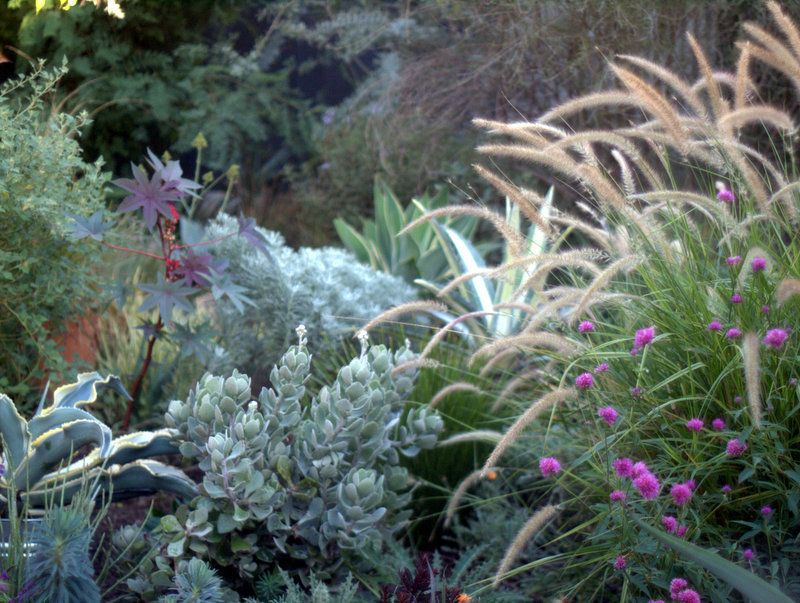
My own personal “meadow,” of course, must include agaves. Just as the taco truck was arriving, and before hearing Grant Lee Stevenson’s talk on palms, I had to leave.
Did anybody else attend the palm talk?
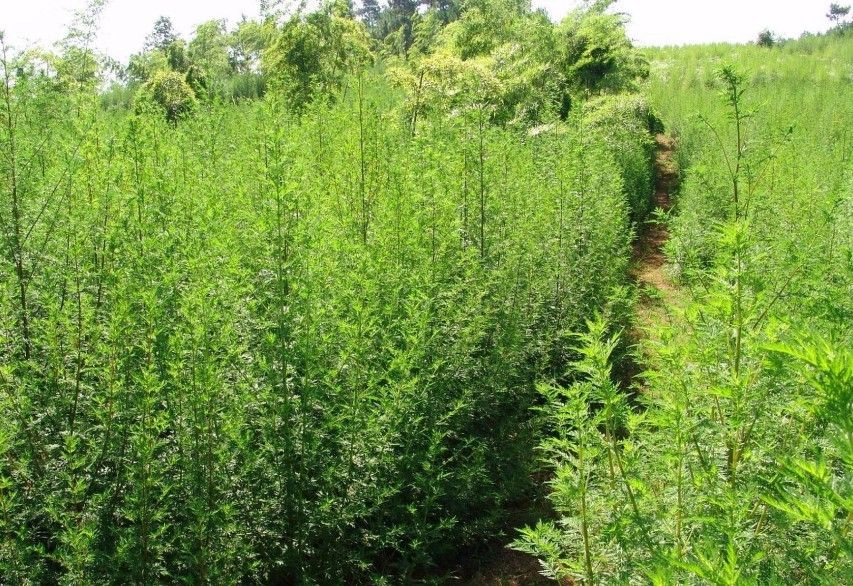
photo found here

And congratulations as well to Dr. Tu, who solved the problem of increasingly drug-resistant malaria with artemisinin extracted from Artemisia annua.
Dr. Tu poured over ancient texts of Chinese herbal remedies and “reread a particular recipe, written more than 1,600 years ago in a text titled “Emergency Prescriptions Kept Up One’s Sleeve.”
The directions were to soak one bunch of wormwood in water and then drink the juice.” (“Answering an Appeal by Mao Led Tu Youyou, a Chinese Scientist, to a Nobel Prize“)
Plants and people, what a team!
Dr. Tu realized that high temperatures were compromising the active ingredient and devised an ether-based solvent, tested it on mice and monkeys, and then herself.
China has now received its long-anticipated Nobel Prize for science and the world has gained an effective antimalarial in its drug arsenal.
Plants matter. Dr. Tu proved again that they are literally the emergency prescriptions kept up our sleeves.